Buying the Right 2.5GbE Switch Switch First Time
Whether you like it or not, 2.5 Gigabit ethernet is very much a THING in 2022! From ISP routers and gaming desktops, to USB adapters and PCIe cards at $25, the access to 2.5x traditional 1GbE network speeds is pretty much 100% for everyone now. The ease of making the switch to 2.5GbE is made even easier when many client network hardware devices are either arriving with 2.5G at the same price as 1G, or include WiFi6 capabilities and therefore have the potential to exceed wired 1GbE too. So, when buying hardware for your home or office in 2022 or 2023, it is understandable that for reasons of future-proofing, you might want to invest in 2.5Gb hardware to ensure everything has the fullest bandwidth possible, without breaking the bank. One of the most important devices you will need to get in order to manage a 2.5GbE network (ensuring no bottlenecks and/or making sure everything gets their fair share of the bandwidth) is by investing in a network switch. A network switch is much like a plug adapter/extension can provide more power points from a single socket over a larger distance, but that also means that much like plug adapters, some are more reliable than others, have features of control and efficiency that are not available on all others and, ultimately, that some 2.5GbE network switches are better than others!
Want to Skip to the Best Switches? Click below to jump ahead:
- BEST 2.5GbE to USB Adapter
- Cheapest 2.5GbE Network Switch
- Best Value PoE+ 2.5GbE Switch
- Best 8-Port 2.5GbE Switch
- Best Gamer 2.5G/10G Switch
- Best Value Managed 2.5GbE and 10GbE Switch
- Best Unmanaged 2.5GbE and 10GbE Switch
So, today I want to walk you through the best 2.5Gb network switches you can buy right now, broken down into the best for price, value, scale, features and more. Before we go any further though, I know what you are thinking. Why should someone invest in a 2.5GbE network switch/setup, when they can just skip it and go for a 10GbE setup?
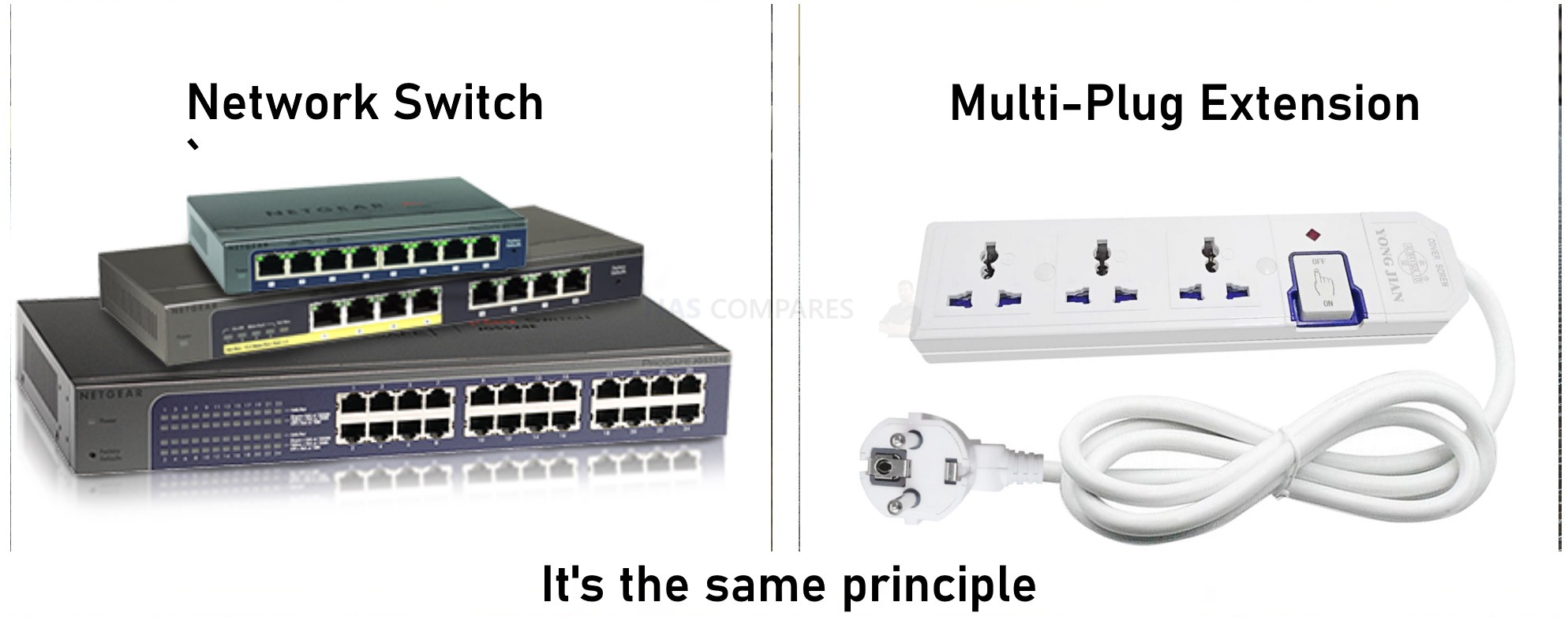
Which Choose 2.5GbE over 10GbE in 2022 and 2023?
It’s a fair point. Although 10GbE is still more expensive than 1GbE and 2.5GbE, it HAS come down in price quite noticeably over the last 5 years. This alongside improvements in more efficient and affordable 10GbE network controllers has led to 10GbE routers and 10GbE switches arriving on the market at a much more affordable price point than ever. Many die-hard network veterans turn their noses up at 2.5GbE, as (alongside 10G being available to businesses and prosumer users for the better part of 10-15years) they consider 2.5G to be a stop-gap and overall better to spend the money towards something bigger and broader in bandwidth. So, why should you care about 2.5G then? Well, a few reasons actually. Such as:
- Although 10GbE switches and routers ARE in the market at a better price than ever, they are still 3-4x the price of 1GbE alternatives in the managed or unmanaged form
- 10GbE ports on laptops, computers and standard office hardware is still very much in low adoption. 2.5GbE featured less than 1G, but it’s still ahead of 10GbE in consumer adoption by default
- PCIe upgrades with 10GbE are still very expensive (1Gb PCIe = $10, 10Gb PCIe = $80-100 minimum)
- External 10GbE upgrades are limited and very expensive (Thunderbolt to 10GbE are your only option and start at $150-200, such as the Sonnet SOLO10G-TB3 or QNAP QNA-T310G1T), whereas USB-to-1G adapters are $10-12 and USB-to-2.5GbE are $20-25
- 10GbE arrives in both Copper and Fibre, which is useful for diverse setups, but leads to a coin toss of more expensive 10G Copper base hardware vs 10G Fibre cables/transceiver high price point and complexity. 2.5GbE uses all the same hardware in place as traditional 1GbE and allows for improved sustainability and less waste
- Most client hardware is not able to take advantage of 10GbE and although having 1-2 high bandwidth devices (a NAS or SAN type server) connected over 10Gbe to the network can be beneficial to all, most client hardware devices will never be able to saturate 10Gb Connections. In those cases, a 1x10G and 8+ X 1G solution is preferable – which end up costing more than full, widespread 2.5G adoption.
So, yes, 10GbE will most certainly provide you with more bandwidth to play with, but it will cost you more – both for the switch, but also to upgrade each of the client devices on the network .This can slightly mitigated in a few ways (opting for 10GBASE-T and reusing some hardware, gradually upgrading the key clients, choosing comb style switches that featured mixed ports, etc) but 2.5GbE is a more affordable alternative that allows you to upgrade some systems enough for them to saturate 250MB/s bandwidth and not overspend on 10GbE for systems/networks that were never going to take advantage of the 1,000MB/s on offer.
|
|
|
| Examples of a 2.5GbE to USB Adapter – $22.99 | Examples of a 2.5GbE Network PCIe Card – $27.99 |
Understanding the Difference Between Managed & Unmanaged
This is one of the two main areas whereby the price of your networks switch can differ wildly. Network switches predominantly arrive in two software types. namely managed and unmanaged. A managed switch is a device that allows an admin or another authorised user to access a control panel visually displayed in the web browser or a supported mobile app, to configure numerous settings inside the switch and create a much more tailored, superior network environment for their own needs. Ranging from configuring which ports and devices have priorities, combining network ports for larger bandwidth (known as link aggregation or port trunking), creating security rules to prevent network invasion and numerous other unique and customisable configuration options. It can be intimidating to configure these settings and although things have become a little more user-friendly in recent years, it is still pretty overwhelming at first to configure your own network connection in a managed switch.
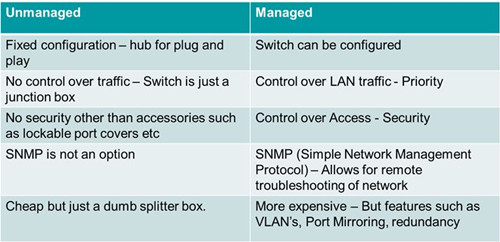
An unmanaged switch, as you probably have already guessed, does NOT allow users to configure the network in any kind of unique way. Unmanaged network switches arrived with more rudimentary internal processes that have numerous default settings for network access, security protocol and how to behave as more client hardware connect to the network. You lose a number of key and popular features such as link aggregation, priority of service, quality of service, failover configurations and more. However an unmanaged switch arrives at a noticeably lower price point due to its more cost-effective internal hardware requirements and if you are a home or even low-level business user who does not require a particularly unique network setup, an unmanaged network switch can often be perfectly fine. It should also be highlighted that smaller, unmanaged switches are often fanless and near-silent in operation too. In short, if you are not particularly tech-savvy, have no interest in learning the ins and outs of your network management, are on a tight budget or are running a fairly rudimentary setup, then an unmanaged switch should be perfectly ok for you and your network requirements. However, in almost every other regard, a managed switch is always better in the long run.
Learn More About Managed VS Unmanaged in the Article Below:
BEST 2.5GbE to USB Adapter – QGeeM 4-in-1 2.5GbE & USB C Hub – £25.49 (currently on offer 06/22)
The 4-in-1 USB C to ethernet hub expands the USB-C port of your laptop to 6 functions. You can connect to the Ethernet, charge the laptop, use an external monitor, data transfer, connect the mouse, etc. to improve your work efficiency. In the process of expansion, it cleverly retains all the functions of the USB-C port that supports up to 100W PD to charge your laptop at full speed, the data transmission speed reaches an astonishing 5Gbps, and it also supports 4K@30Hz media display (mirror mode and extended mode. The USB C adapter is stylishly designed, lightweight and portable, very suitable for home, office environments and business trip, easily handle multitasking and increase productivity.

- 1x Ethernet: up to 2.5 Gbps
- 1x USB C: 100W Charging / 4K@30Hz Video / 5Gbps Date Transfer
- 2x USB 3.0: up to 5 Gbps
The USB c to 2.5g ethernet adapter is for users looking to move beyond Gigabit Ethernet speeds. It can provide network bandwidth of up to 2.5Gbps, 2.5 times the traditional network, and backwards compatible with 10/100/1000Mbps. Compared with wireless connections, wired networks are more secure and stable. There will be no lag in video conferencing, transferring files and playing games. 100W Power Delivery via the USB C PD port, which charges up to 100W, When expanding other devices, you don’t have to worry about running out of power on your laptop, and you can also reduce the number of cables on your desktop. The USB 3.0 port can transfer your files at speeds up to 5Gbps, 10 times faster than the USB 2.0. Backward compatible with USB 2.0 and below, Allows you to connect keyboard, mouse, hard disk, U disk, etc. to your device.
I recently upgraded my MacBook Pro and I was bummed to find out that the new versions don’t have USB ports anymore. This hub allows me to plug in all my devices that use a USB! It’s small and portable which I appreciate because I can easily carry it with me in my backpack without much-added weight. Just tested it out using my Cricut machine and it worked like a charm! Allows 2.5 gig ethernet speed where there is no port on the laptop. Much faster for wired environments than Wi-Fi only. Since it provides a USB “C” port and two USB “A” ports, you still have USB available on the laptop. Works Great and adds functionality to the laptop! My studio has a really unstable wifi signal so I am looking for a portable hub including Ethernet and a USB port for my Dell XPS. And I am happy with this tiny hub. It works great after 3 days of use. Now I don’t need to worry about the unstable connection during my zoom meeting. In addition, I can connect more devices like flash or external drives to my laptop. It is very light and convenient, I can also bring it when I travel without any concern.
Check if this switch is available on Amazon. This helps us at NASCompares
Cheapest 2.5GbE Network Switch – QNAP QSW-1105-5T – £80-100 (currently on offer 06/22)
The QNAP QSW-1105-5T switch definitely lives up to what it promises and has a very clear target user in mind. It does not pretend to be more than it is and because of that can maintain high performance and low physical and power usage impact for users looking to move to the next level of networking without spending a vast amount. The QSW-1105-5T serves as a great upgrade for users moving from gigabit ethernet and towards multi-gigabit environments and with fantastic growth in 2020 towards 2.5G, 5G and 10Gbe in affordable hardware, the need for a more palatable and affordable upgrade to this tier is not only hugely welcome but fast becoming an inevitability. That said, the QSW-1105-5T is not for everyone, it seems a little pricey when unmanaged 1Gbe 5-Port switches are generally around £40-50.
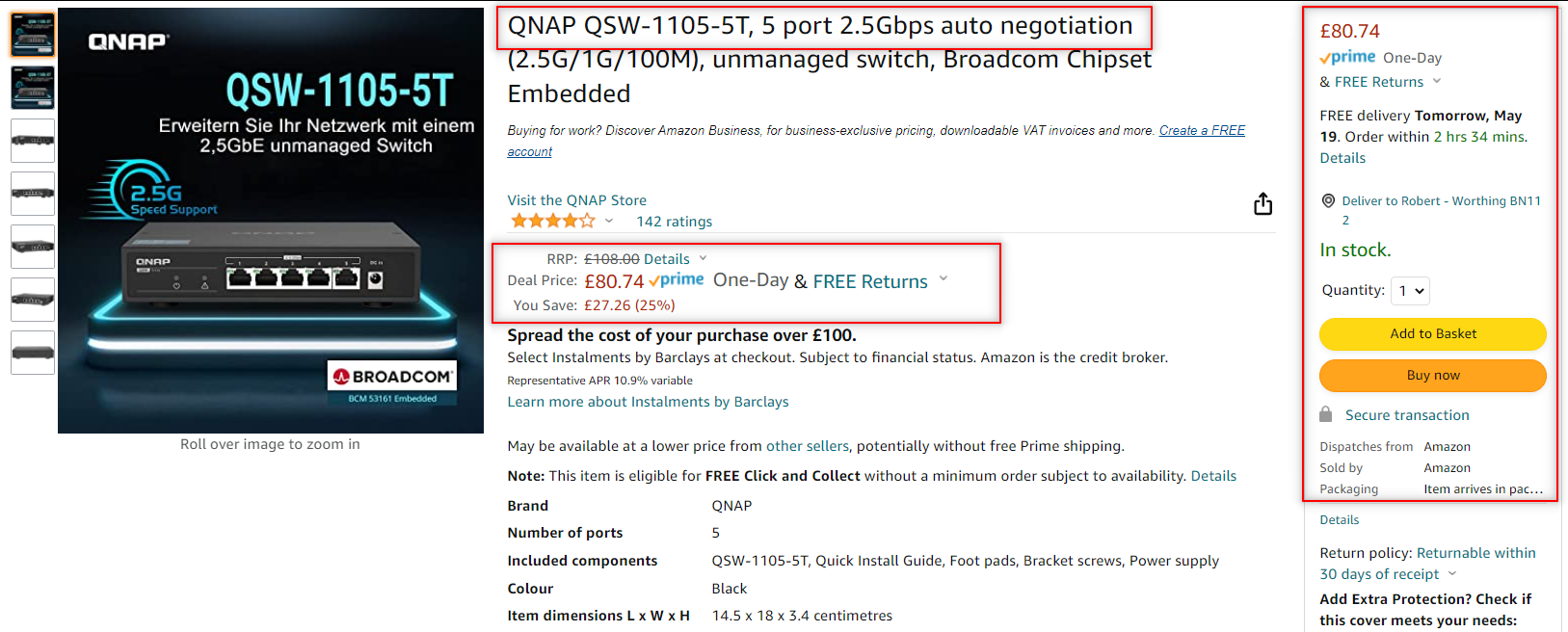
Also, if you already have a multi-gigabit network environment in place or have need of a more controllable and priority defining network environment in mind, you will probably find the QSW-1105-5T a backstep and limiting in its scope. But the QSW-1105-5T is not designed for that and does not pretend to be so, and with QNAP having released and in the process of releasing switch options to cater to an ever-evolving network clientele, whether this is the switch for you or not, by the end of 2020 QNAP will almost certainly have a switch that suits your needs and budget. Bottom line, I really like this device and couldn’t see myself finding many uses for this device for aspiring YouTubers like me as well as day-to-day data work in general.
Needless to say, the QNAP QSW-1105-5T is not a hugely powerful switch that is designed to challenge smarter or larger entries into the QNAP QSW range of switches – but that is largely the point! Along with users looking at play n play upgrades to their PC/Client machines at home/office with USB adapters (such as the QNA-UC5G1T), the appeal of 2.5Gbe upgrades in networks that favour WiFi 6 and (soon) WiFi 6E is actually quite pronounced. In this arena, the QSW-1105-5T has little or no competition right now and even if it did, it’s a very solid and well-made product. The price point of over $100 for a 5-Port switch that is unmanaged, when you can pick up 1Gbe unmanaged switches at $40-50 is a little off-putting, but given the next tier (10Gbe) will likely set you back $200 for the same unmanaged architecture, this is more a question of finding a balance I guess. Aside from that, It is hard to fault the switch for what it is, as it is delivering on all it’s promises – I just wish there was a managed version too to take advantage of 2.5Gbe LAG connectivity that is available in almost all multi LAN QNAP solutions in 2020/2021.
Check if this switch is available on Amazon. This helps us at NASCompares
Best Value PoE+ 2.5GbE Switch – TRENDnet TPE-TG350 – $184
Expand your network’s bandwidth and reduce traffic bottlenecks with TRENDnet’s Unmanaged 2.5G PoE+ Switches. These 2.5G PoE+ switches come equipped with 2.5GBASE-T RJ-45 ports that provide higher gigabit speeds capable of up to 2.5Gbps over your existing Cat5e or better cabling. Each high-speed 2.5G PoE+ switch features a durable metal enclosure and can be mounted to the wall for setup flexibility. The fanless design lowers energy consumption and eliminates distracting operating noise. TRENDnet’s reliable 2.5G PoE+ switches are cost-effective solutions to increase your network’s throughput. A 55W total PoE power budget on this PoE+ switch supplies up to four PoE+ devices with up to 30W per port.
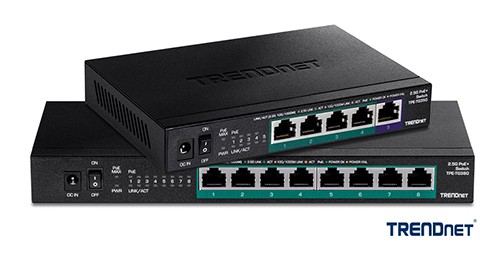
- 5 x 2.5GBASE-T ports
- 55W PoE power budget
- IEEE 802.3bz (2.5G) compliant
- Supports IEEE 802.3at/af PoE standards
- Backwards compatible with 10/100/1000Mbps devices
- 25Gbps switching capacity
- Fanless design eliminates noise
- Wall mountable for installation flexibility
Check if this switch is available on Amazon. This helps us at NASCompares
Best 8-Port 2.5GbE Switch – TRENDnet TEG-S380 – $179
Despite it’s growing popularity with hardware manufacturers, 2.5G still gets overlooked, and this is a shame. Why? Well, 2.5G network capabilities are showing up in more computers and motherboards nowadays, and it can be the most affordable way to go multi-gig. For instance, 2.5G cards and dongles won’t break the bank, while 2.5Gbps speeds can theoretically be achieved with existing Cat5e. Along with the previously mentioned TG350, TRENDnet releases an affordable unmanaged 2.5G switches. Called “TEG-S380, an 8-Port Unmanaged 2.5G Switch and is the brand’s addition to TRENDnet’s Multi-Gigabit Networking Solutions family. Both switches include 2.5GBASE-T RJ-45 ports, which allow users to achieve up to 2.5Gbps over existing Cat5e (or better) cabling. TRENDnet’s new 2.5G switches are cost-effective means of increasing a network’s throughput, and helping to reduce or eliminate network bottlenecks.

These multi-gigabit switches also feature a durable metal housing, as well as a fanless design to eliminate distracting operating noise. For installation flexibility, the 2.5G switches are conveniently constructed to be mounted on the wall or placed on a desktop. These TRENDnet switches are IEEE 802.3bz compliant; they are also backward compatible with legacy technology hardware. No special configurations are required for these switches to connect and network devices to high-speed 2.5G Ethernet. Equipped with 2.5GBASE-T RJ-45 ports that provide higher gigabit speeds capable of up to 2.5Gbps over existing Cat5e or better cabling. The 2.5G switches feature metal housing with a convenient wall mountable design for greater installation flexibility. Meanwhile, the fanless design of the 2.5G switches lowers energy consumption costs and eliminates operating noise.
Check if this switch is available on Amazon. This helps us at NASCompares
Best Value Managed 2.5GbE and 10GbE Switch – QNAP QSW-M2108-2C or QSW-M2108-2S – $279-309
There is always going to be the question of “who actually has 2.5Gbe these days?”, which is a perfectly valid point! The answer is that thanks to the growth of WiFi 6 (802.11ax) we are seeing lots of router solutions arriving with 2.5G ports. That’s not all though, there are several USB-to-5Gbe and USB-to-2.5Gbe adapters in the market that serve as much MUCH more affordable (and far more convenient) alternatively to hardware systems upgrading to 10Gbe via a PCIe card. Lastly, some more compact systems (Raspberry Pi, MacBook, ChromeBook, Laptop, Surface Pro, etc) do NOT have the ability to upgrade their network port conventionally. So, given that to date, there is no 10Gbe-to-USB adapter on the market (and if there was, I would look at Aquantia in the future), the only alternative to break out of 1Gbe bottlenecks is to use 2.5/5G USB adapters – which is EXACTLY why this 10Gbe and 2.5Gbe network switch exists! QNAP was not one of the first to introduce a budget +Gigabit ethernet switch in 2020/2021 and given the affordability of 10Gbe, as well as the need for businesses to improve their internal networking speeds to match that of high-end ISP and fibre internet around the world, they likely will not be the last.
However, the combination of 8x 2.5Gbe with the 2x10G really makes the QSW-2108-2C managed switch really stand out, whilst still arriving in a compact and affordable way – a scaled 10Gbe switch for businesses that want to make the step towards this network bandwidth, but is still unsure about the investment. With its unique multi-port combo system, allowing users to combine copper and fibre environments, there is a large degree of flexibility even at this more affordable price point. The design is not for everyone and it lacks the lifetime warranty of some more expensive NETGEAR solutions, but the QNAP QSW-2108-2C is most certainly a capable solution and manages to live up to every single promise that QNAP claims. Along with an incredibly intuitive management panel and ease of design that lends heavily from the QTS NAS software, it certainly beats most of its competitors in the GUI department. In short, the QSW-M2108 largely defeats any notion of looking at 1Gbe switches ever again…
Check if this switch is available on Amazon. This helps us at NASCompares
Best Gamer 2.5G/10G Switch – D-Link DMS-106XT – $140
As you can probably guess from my tone throughout this review, I found it pretty tough to fault the D-Link DMS-106XT network switch given its price tag and wide variety of network connectivity. There are a few design choices that are going to split opinion (metal throughout, LEDs, very unconventional shape, etc) but these are quite minor points in the grand scheme of things. The Price tag of this switch for a 10GbE and 2.5GbE switch, even unmanaged, is going to make it damn near irresistible to many buyers and now that it has had some time in the market to increase exposure, availability and reviews, the price tag has become increasingly flexible (arriving as low as £130/$140 in some retailers).
D-link could stand to be a little clearer about the turbo mode and it’s advantages with the DMS-106XT and the extent to which those LEDs can actually be customized is pretty weak, but you are clearly getting a sturdy, solid and high-performance piece of kit here. Additionally, with the increase of affordability of 10GbE, as well as 2.5GbE becoming the defacto port to be used with WiFi 6 client hardware, this switch has a much wider audience than it might have had just 2 years ago. A great piece of kit and one I heartily recommend.
Pros – 10G + 2.5G arriving at the same/cheaper price than many 2.5G-only switches right now. Unique and Attractive Design. Unmanaged BUT the Turbo Mode adds Priority of Sevice features. Fanless + Ridged Metal design assists heat dissipation. LED and lighting are quite cool looking
Cons – LED lighting controls are practically zero
Check if this switch is available on Amazon. This helps us at NASCompares
Best Unmanaged 2.5GbE and 10GbE Switch – QNAP QSW-2104-2T or QSW-2104-2S – $210
QNAP Systems introduced the QSW-2104 series of unmanaged switch models. The series is formed by the QSW-2104-2S and QSW-2104-2T network switches. The QSW-2104-2T is an easy-to-use unmanaged switch with 2-port 10GbE RJ45 and 4-port 2.5GbE RJ45, allowing you to upgrade your network environment by connecting a wider range of devices with different bandwidth requirements. Featuring a near-silent fanless design and compliance with IEEE 802.3az (Energy Efficient Ethernet, EEE), the QSW-2104-2T operates quietly and with optimal power usage. With high performance and superb functionality, the QSW-2104-2T is the ideal choice for creating an affordable high-speed network environment in your home or workplace.
aBoth of them are six-port with two 10GbE ports and four 2.5GbE ports, and the difference is that the QSW-2104-2S has 10GbE ports routed to SFP + fiber-optic transceivers, and the QSW-2104-2T model – to connectors designed for copper twisted pair connection. Note that in the first case, speeds of 10 Gb/s and 1 Gb/s are supported, and in the second – 10 Gb/s, 5 Gb/s, 2.5 Gb/s, 1 Gb/s and 100 Mb/s. The 2.5GbE ports in both cases are designed for twisted pair connections and support speeds of 2.5 Gbps, 1 Gbps, and 100 Mbps. With no complex settings required, the QSW-2104 series supports auto-negotiation that optimizes transfer speeds and performance for each connected device. It also features network loop detection that automatically locks looped ports to ensure the network environment quickly resumes normal operations. With plug-and-play support, near-silent, passively cooled design, IEEE 802.3az compliance, and automatic loop detection and blocking, the QSW-2104 series unmanaged switch is “the ideal choice for affordable high-speed networking environments in homes, and in the workplace” says the manufacturer.
Check if this switch is available on Amazon. This helps us at NASCompares
📧 SUBSCRIBE TO OUR NEWSLETTER 🔔
🔒 Join Inner Circle
Get an alert every time something gets added to this specific article!
This description contains links to Amazon. These links will take you to some of the products mentioned in today's content. As an Amazon Associate, I earn from qualifying purchases. Visit the NASCompares Deal Finder to find the best place to buy this device in your region, based on Service, Support and Reputation - Just Search for your NAS Drive in the Box Below
Need Advice on Data Storage from an Expert?
Finally, for free advice about your setup, just leave a message in the comments below here at NASCompares.com and we will get back to you. Need Help?
Where possible (and where appropriate) please provide as much information about your requirements, as then I can arrange the best answer and solution to your needs. Do not worry about your e-mail address being required, it will NOT be used in a mailing list and will NOT be used in any way other than to respond to your enquiry.
Need Help?
Where possible (and where appropriate) please provide as much information about your requirements, as then I can arrange the best answer and solution to your needs. Do not worry about your e-mail address being required, it will NOT be used in a mailing list and will NOT be used in any way other than to respond to your enquiry.

|
 |
A Buyer's Guide to Travel Routers - GET IT RIGHT, FIRST TIME
Jonsbo N6 DIY NAS Case Review
The Best Bits (and Worst Bits) of NAS of 2025!
Minisforum MS-02 Ultra Review
Minisforum N5 NAS, 6 Months Later - Better, Worse, the Same?
Beelink ME Pro NAS Revealed
Access content via Patreon or KO-FI
Discover more from NAS Compares
Subscribe to get the latest posts sent to your email.


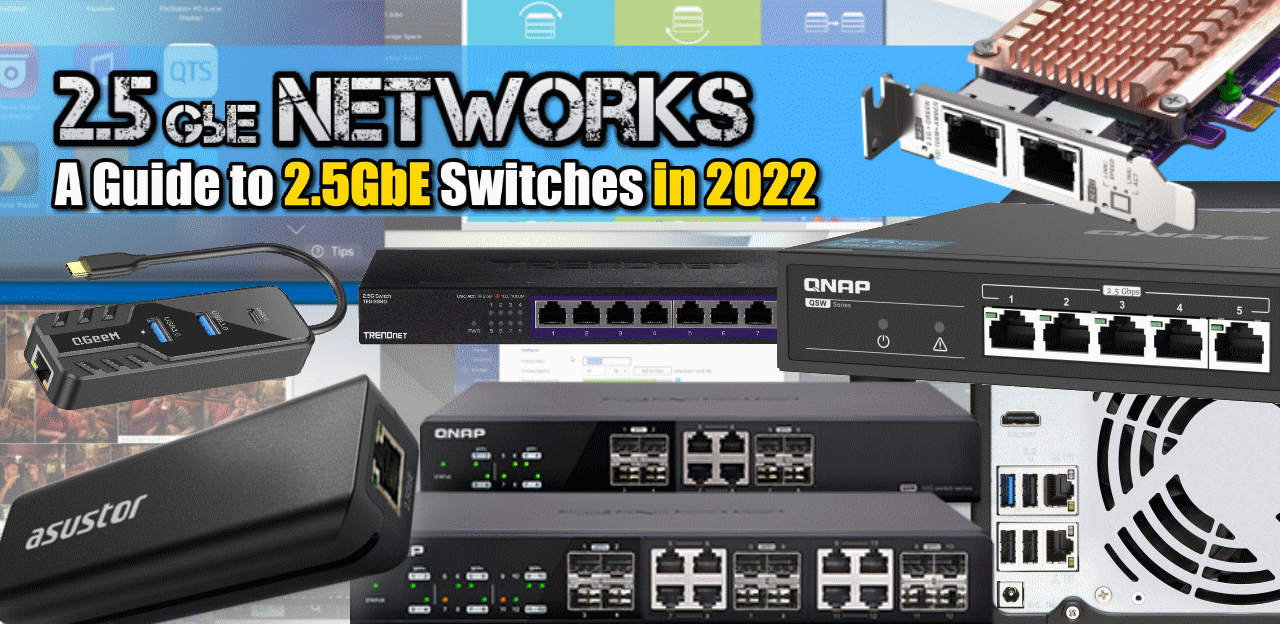
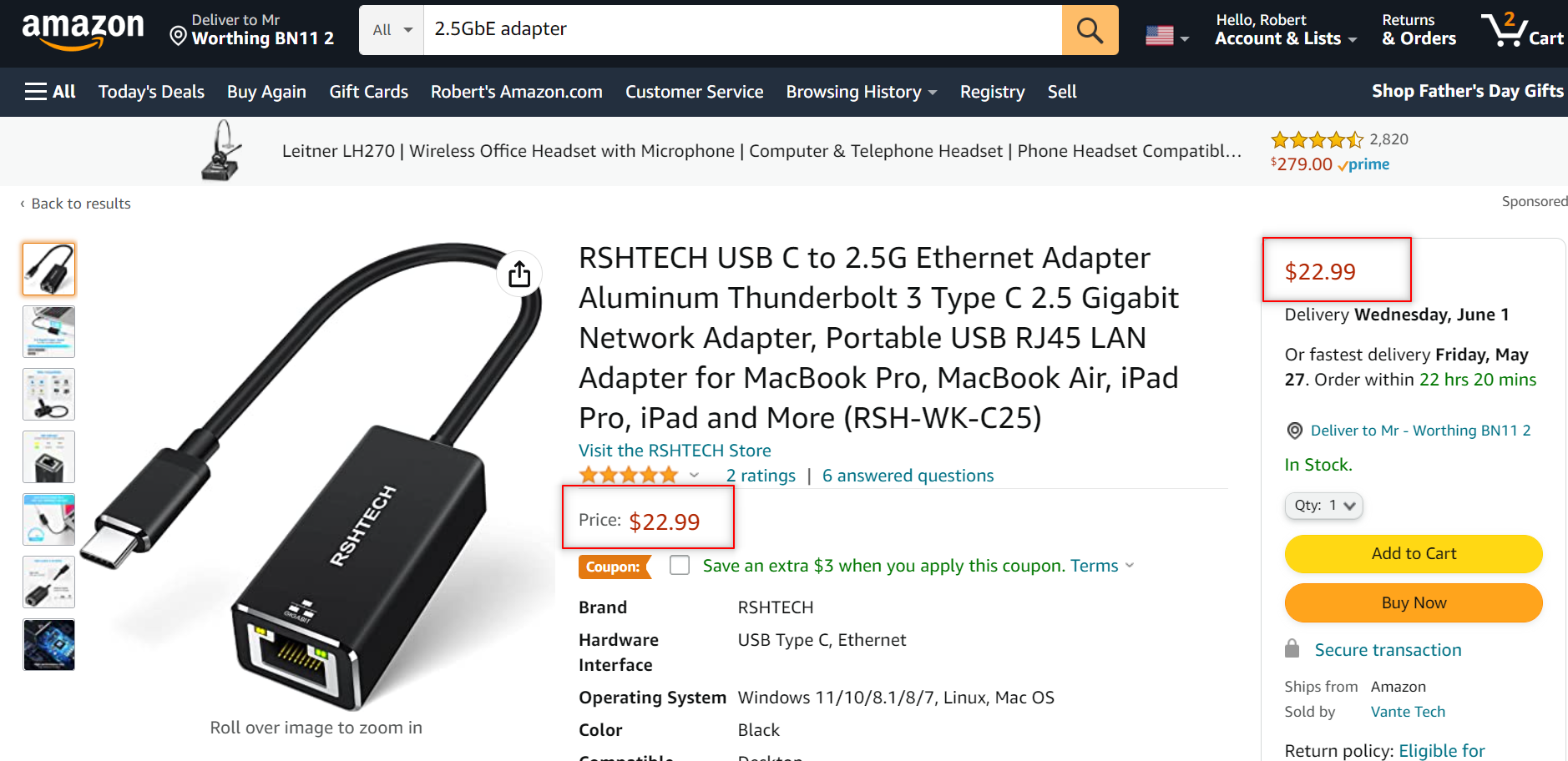
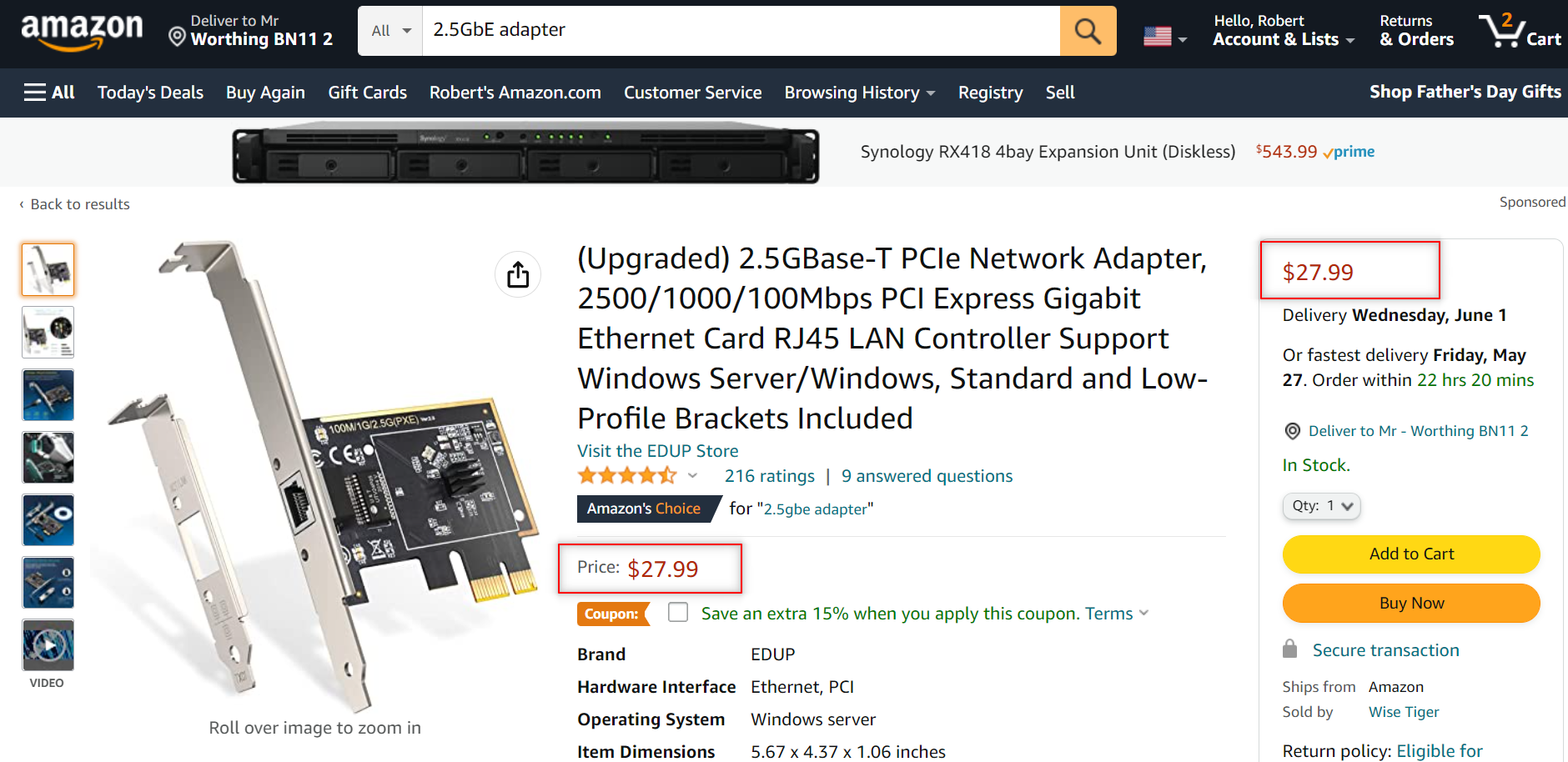
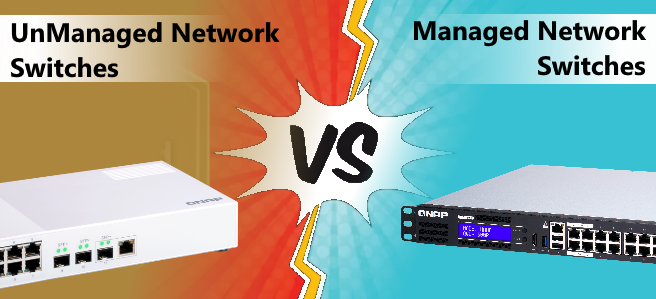

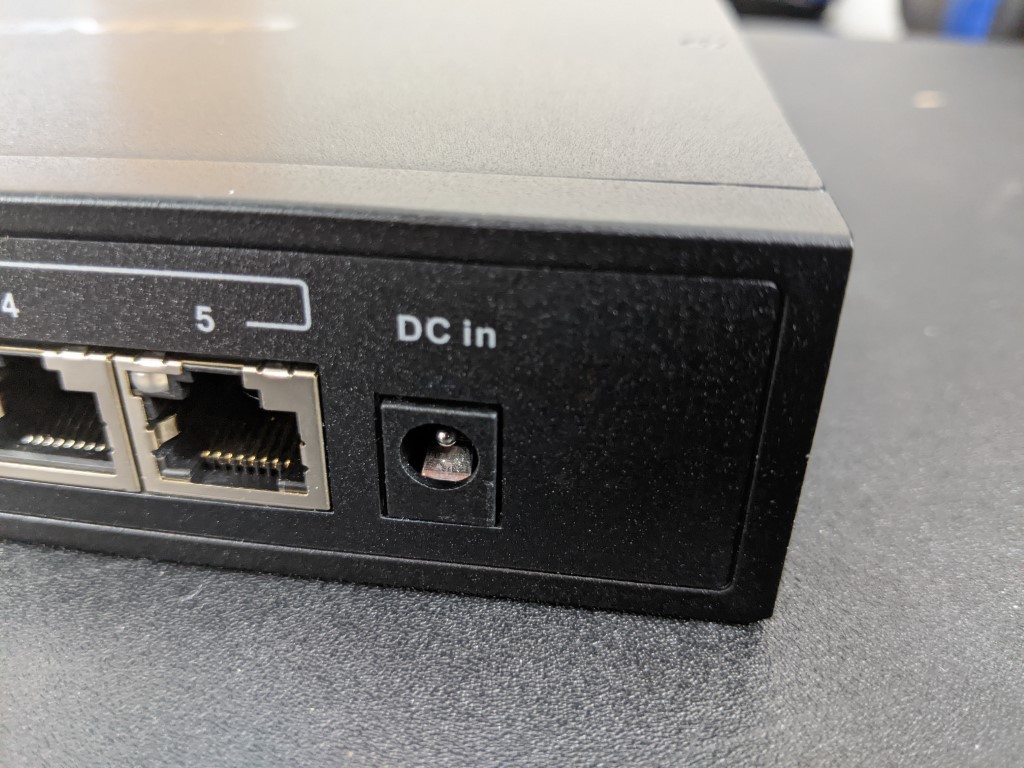
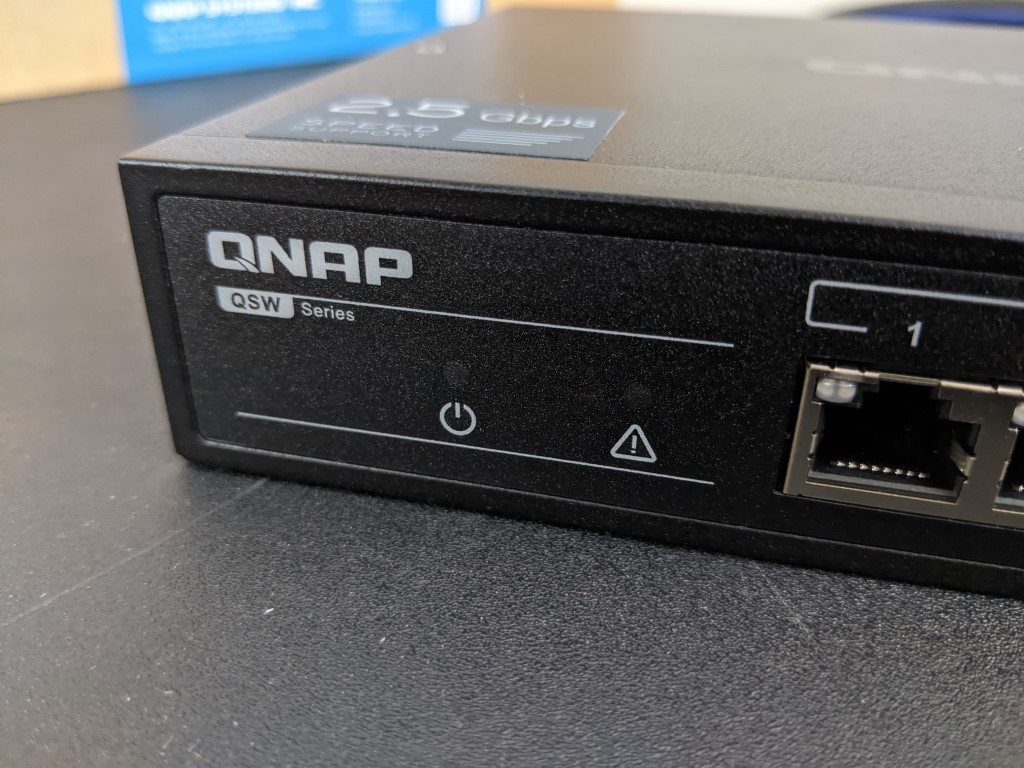
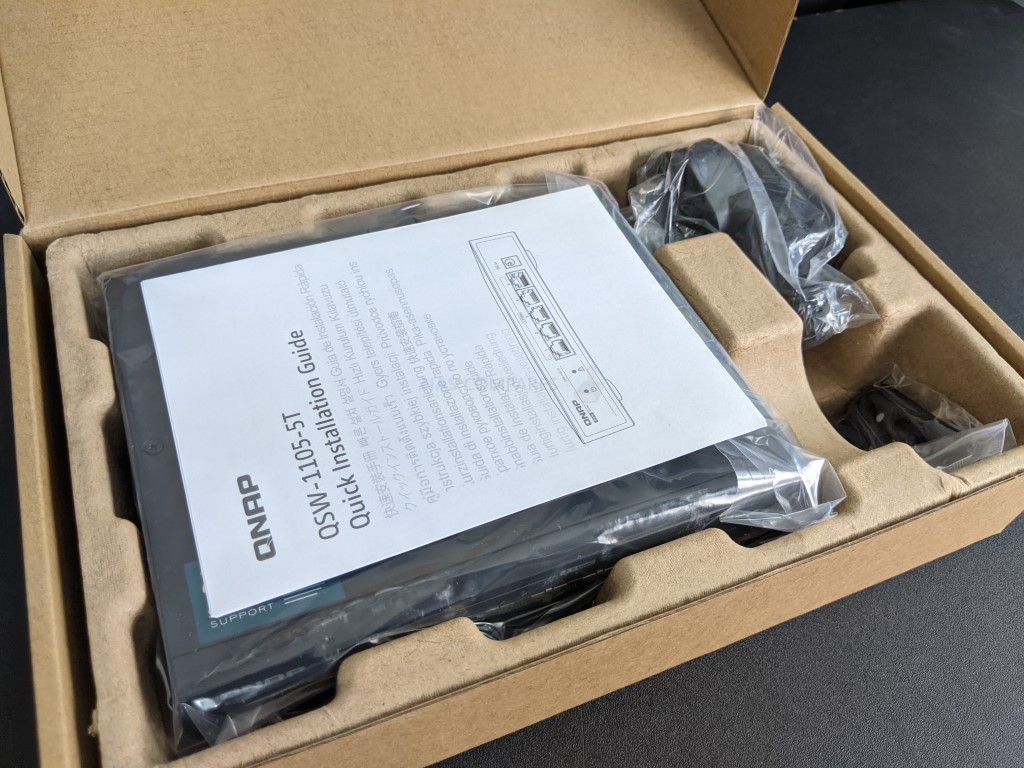
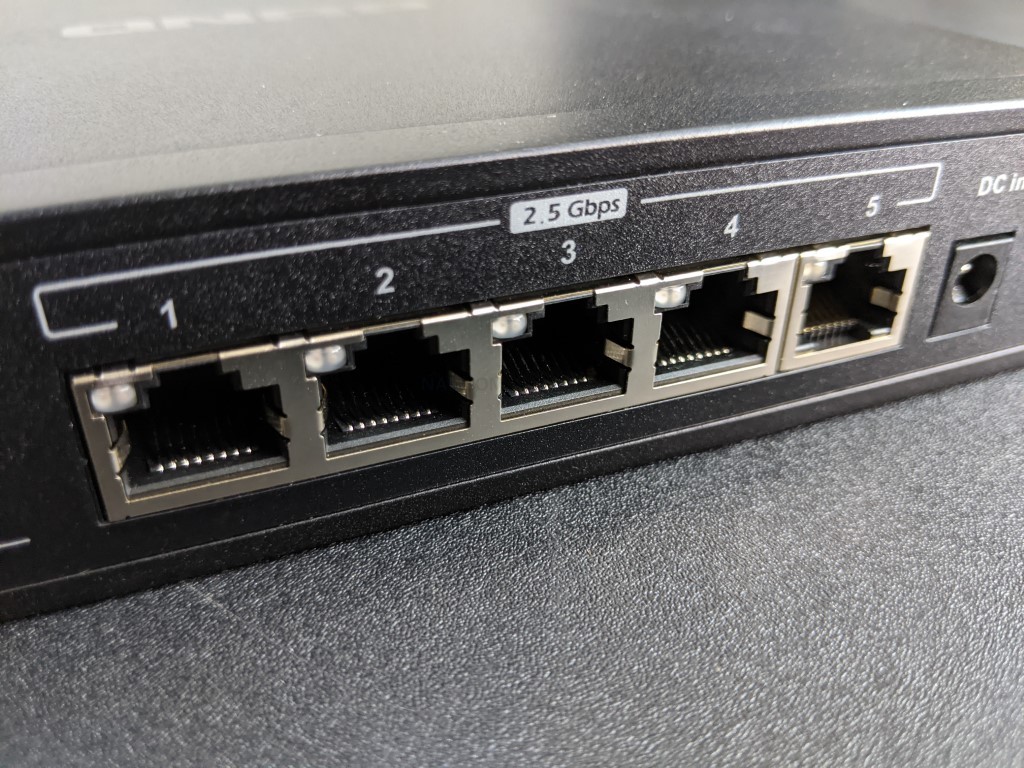
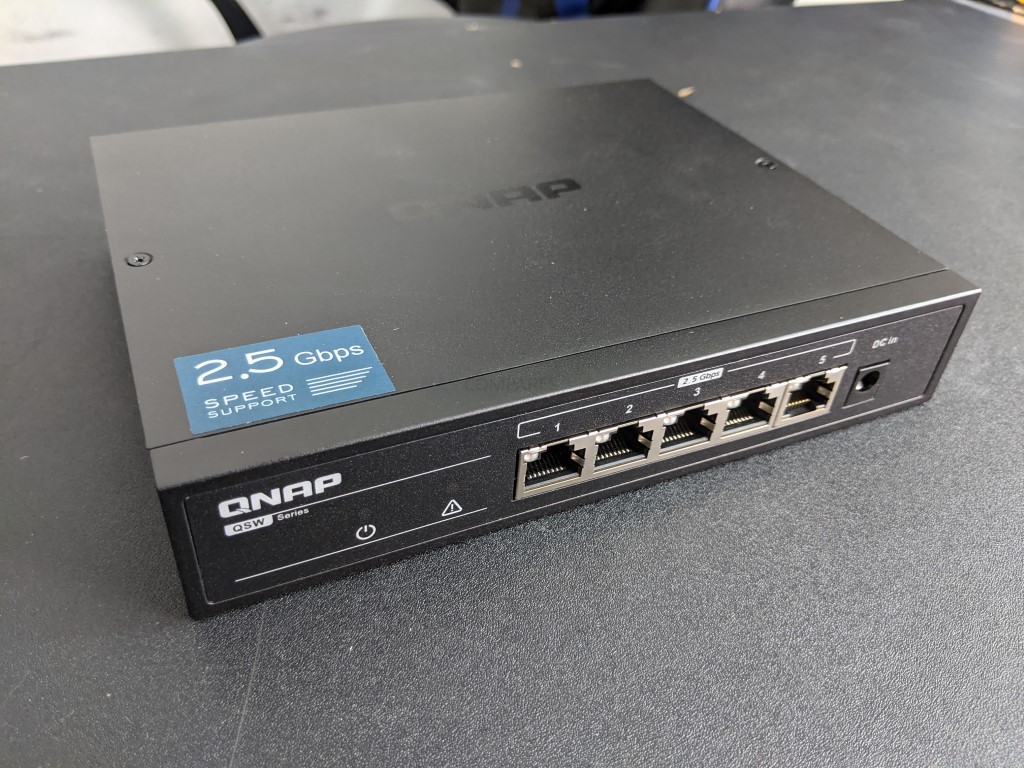
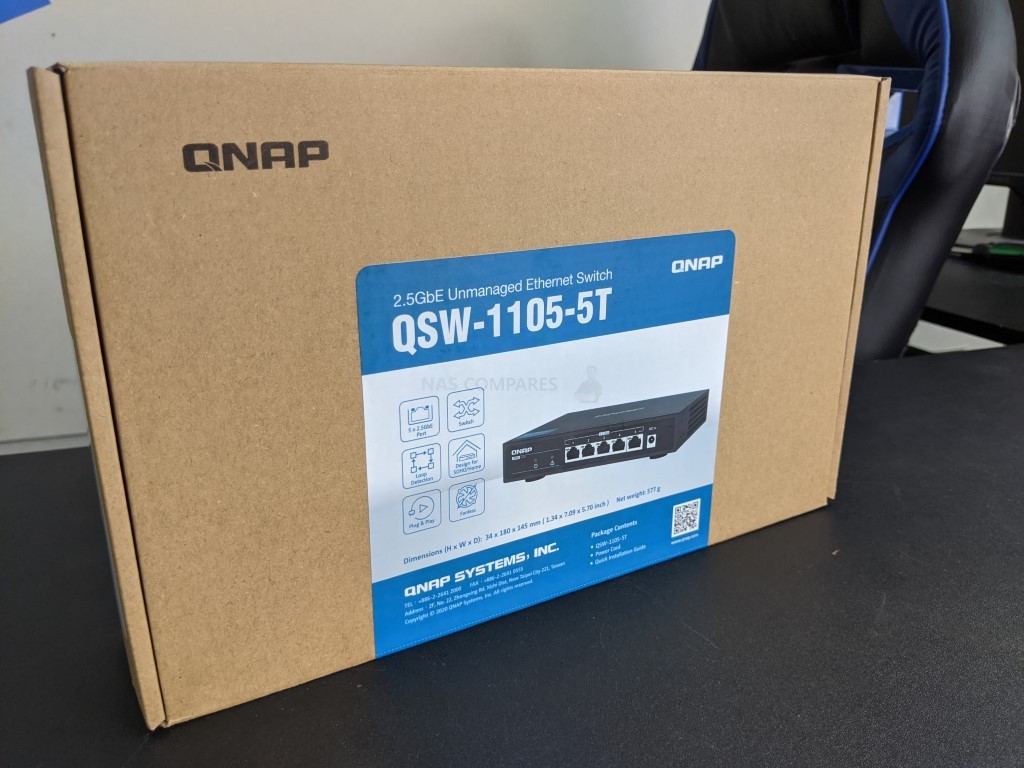
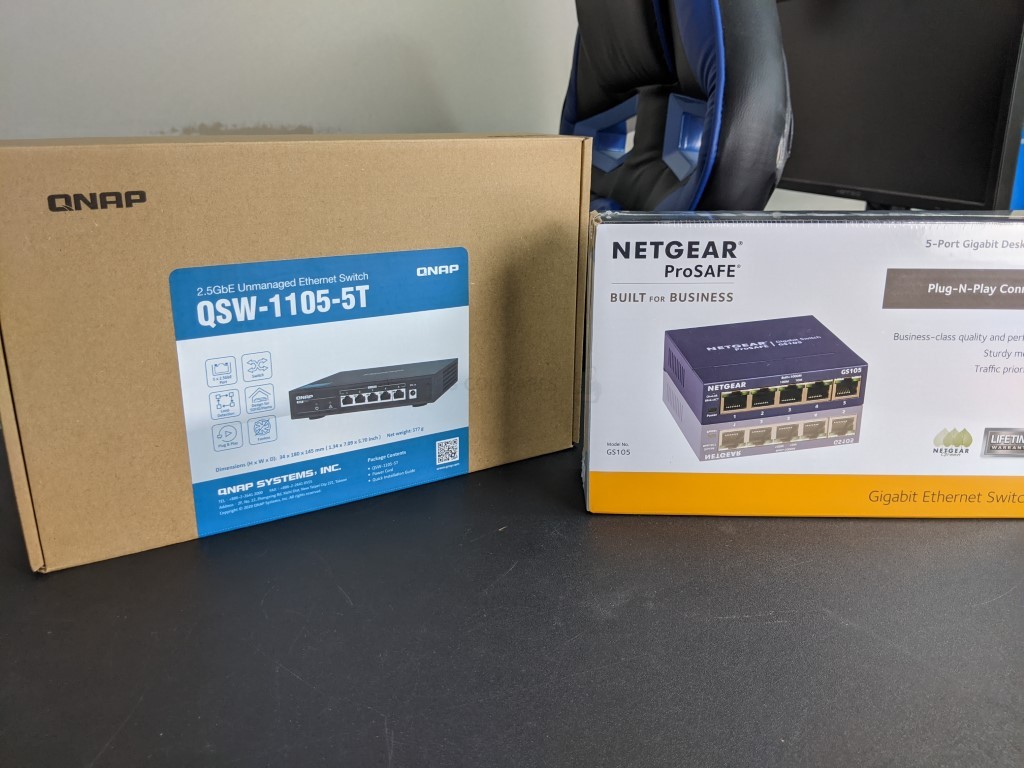
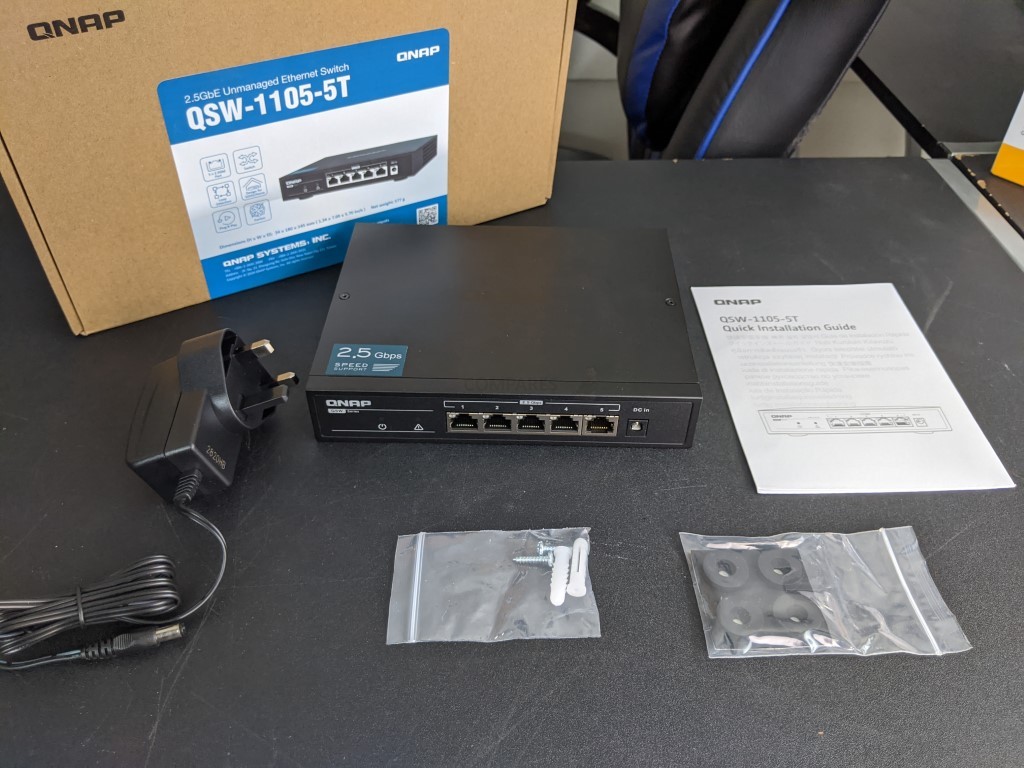
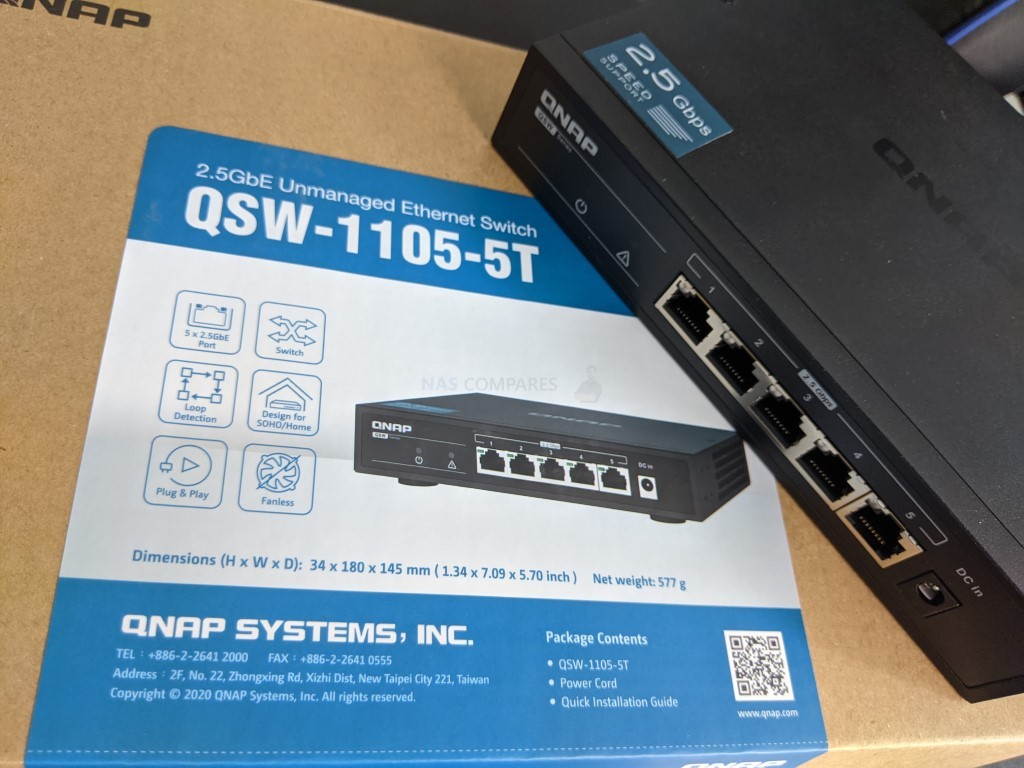
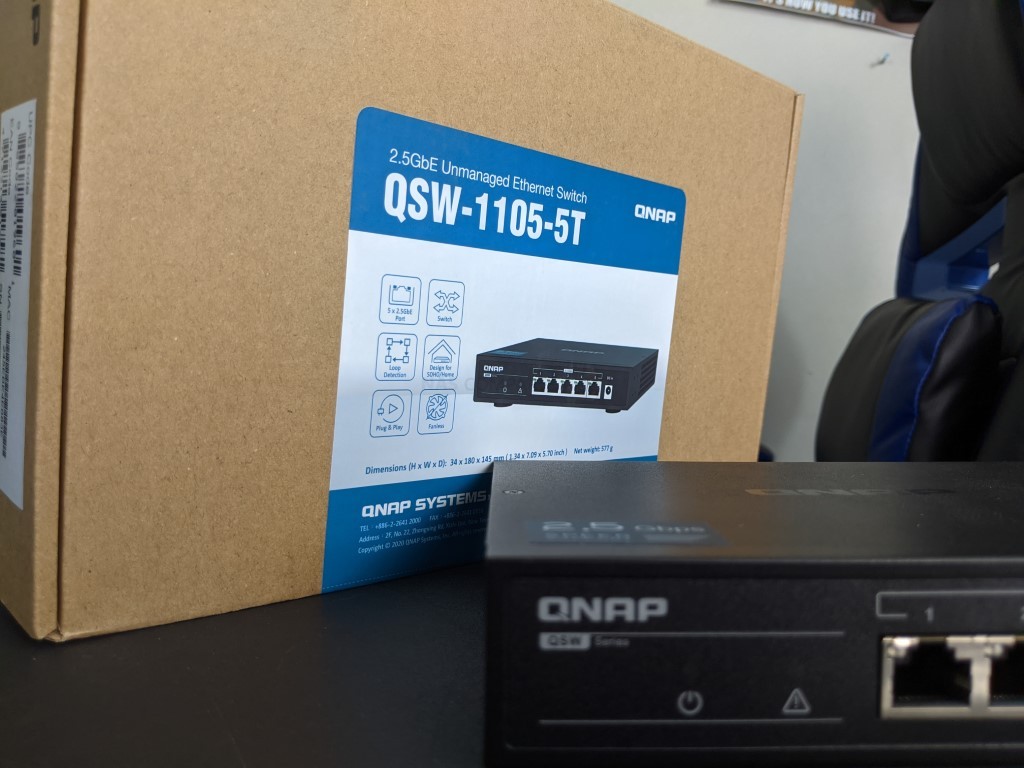
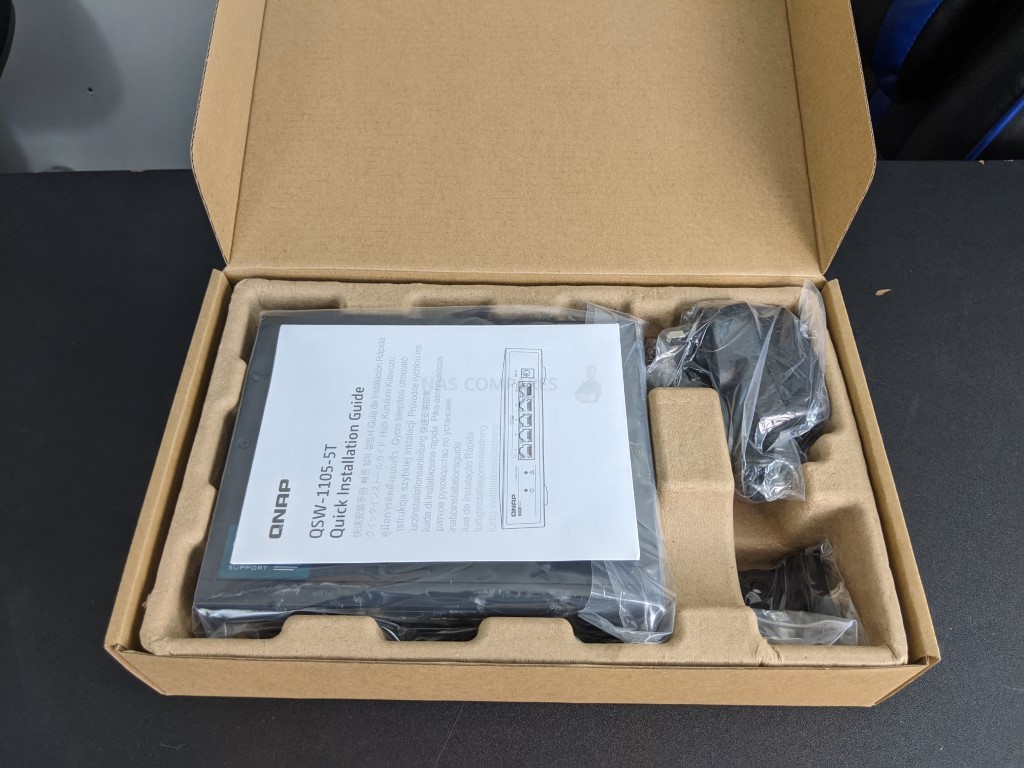
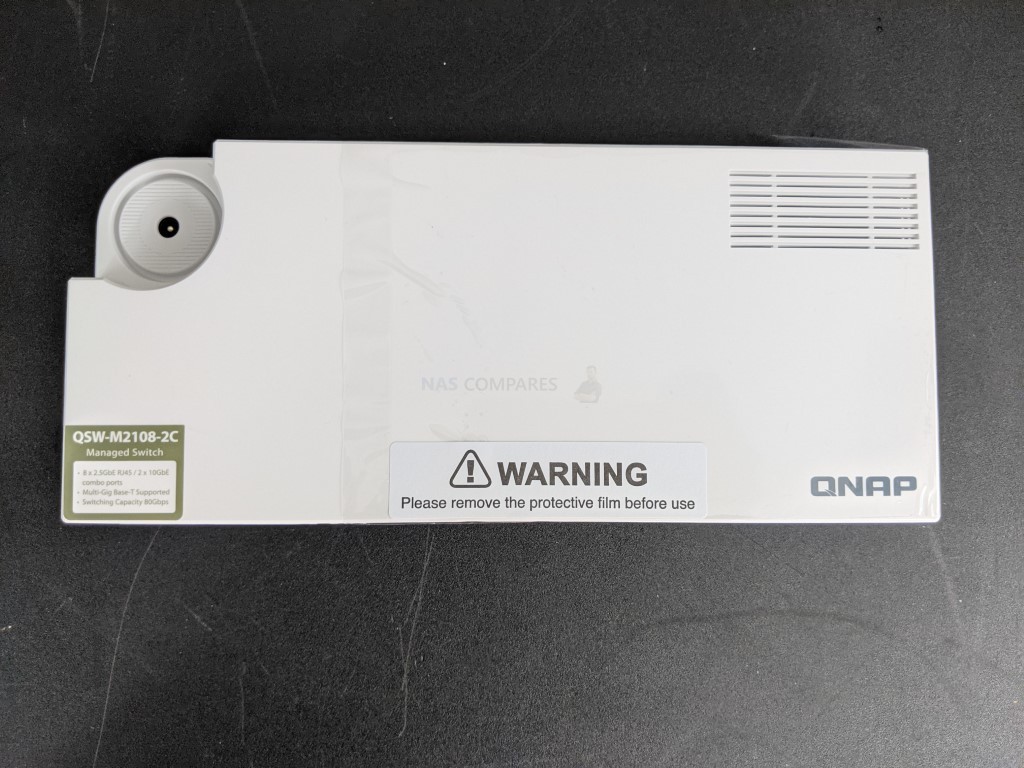
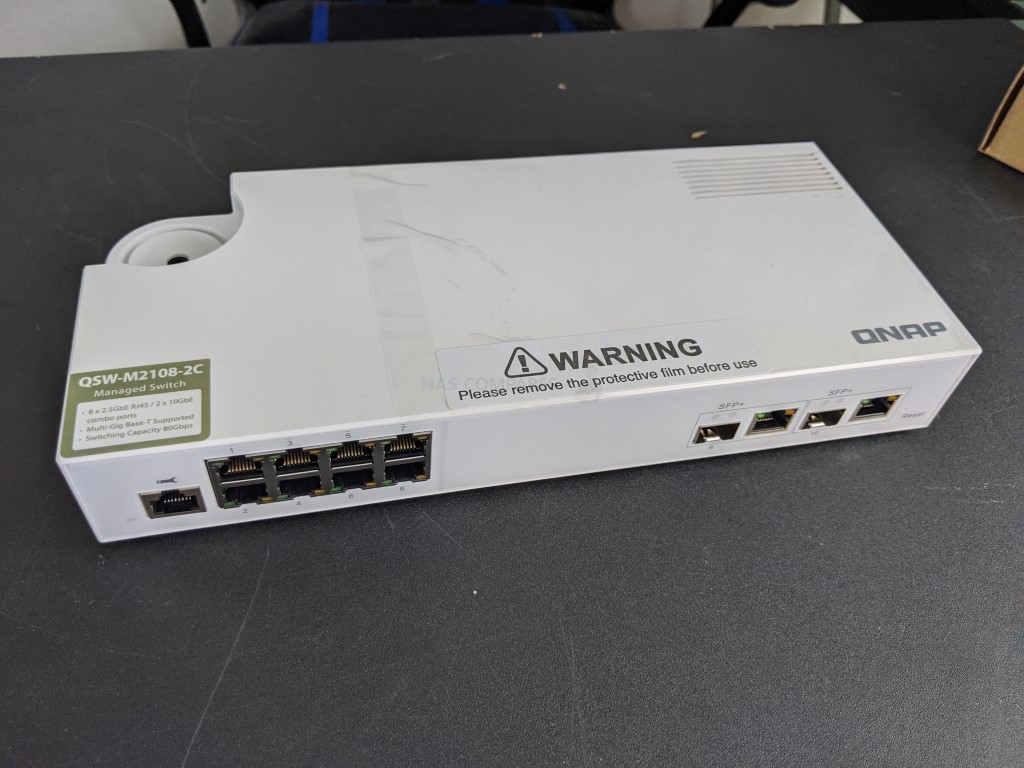
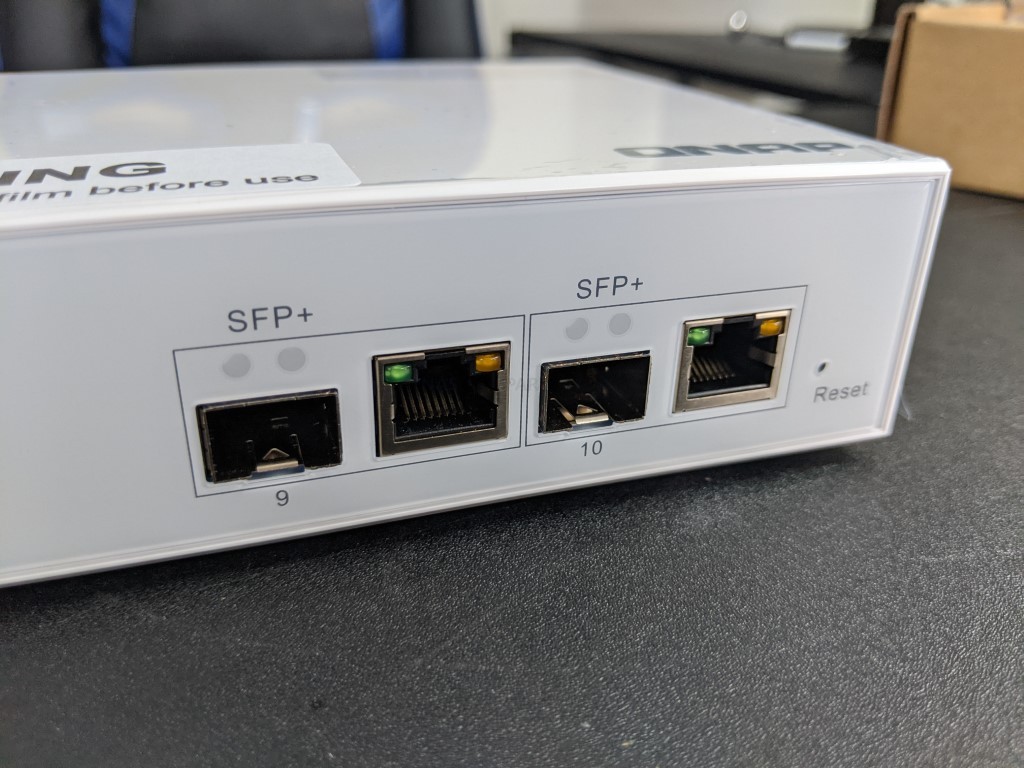
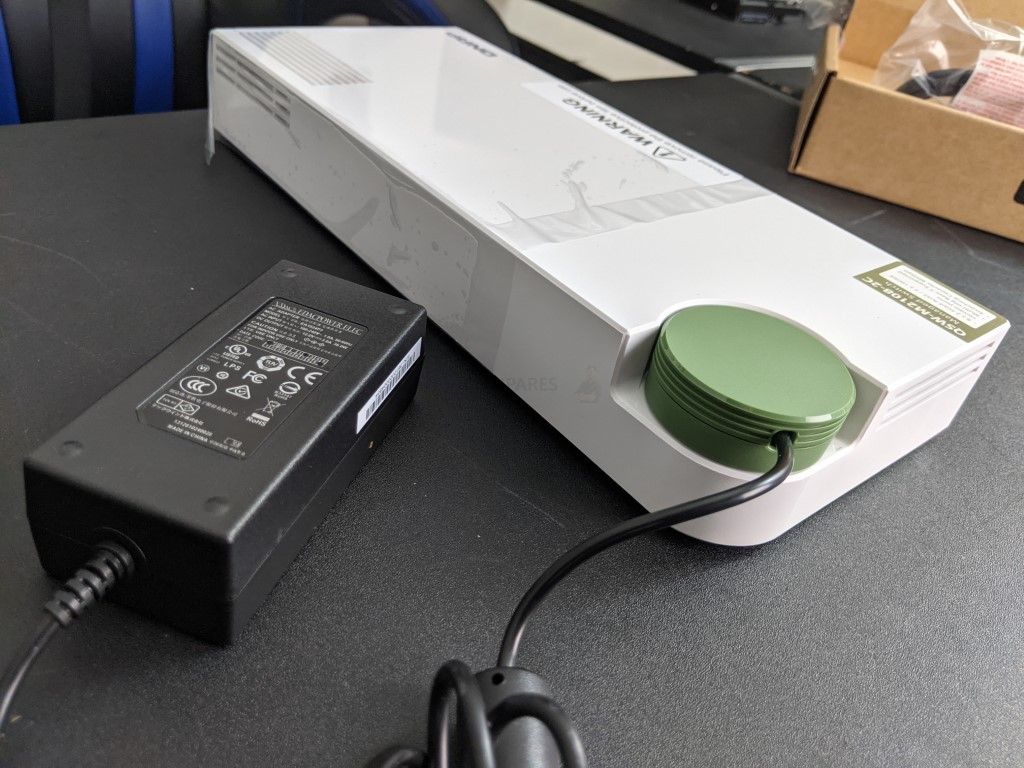
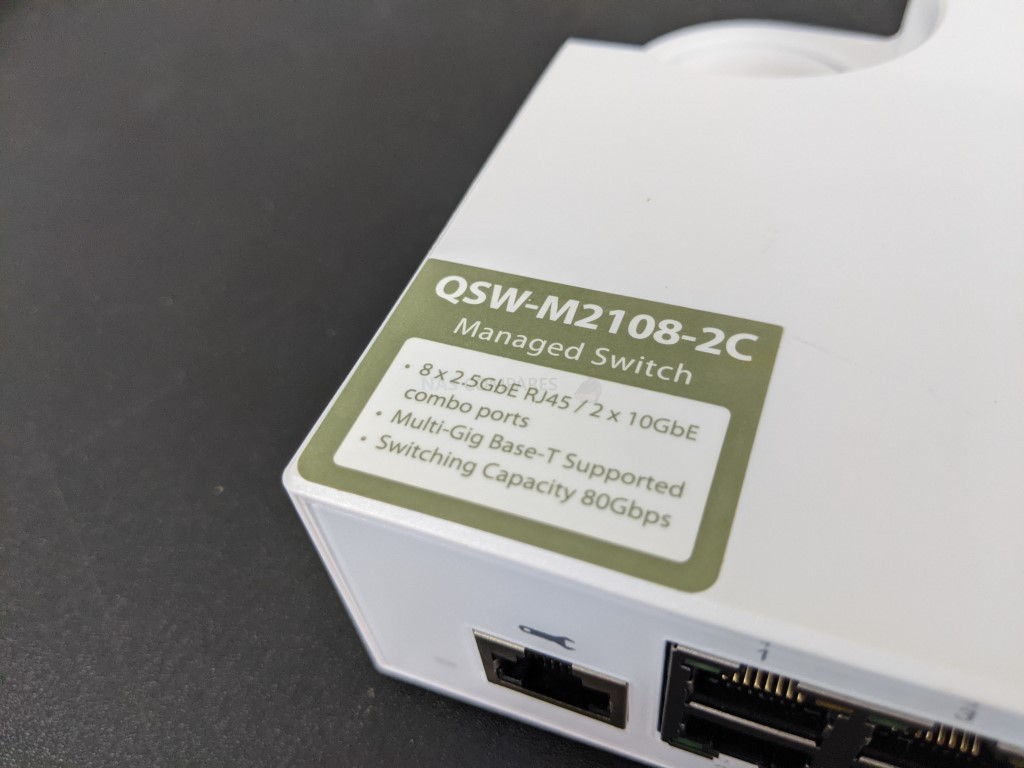
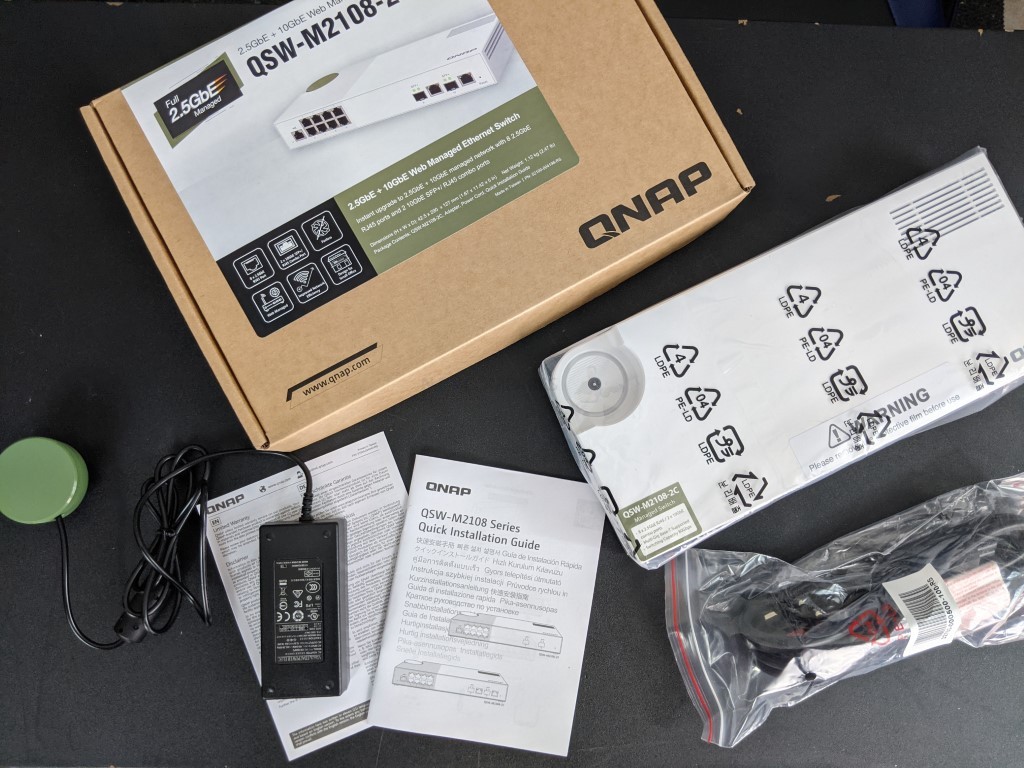
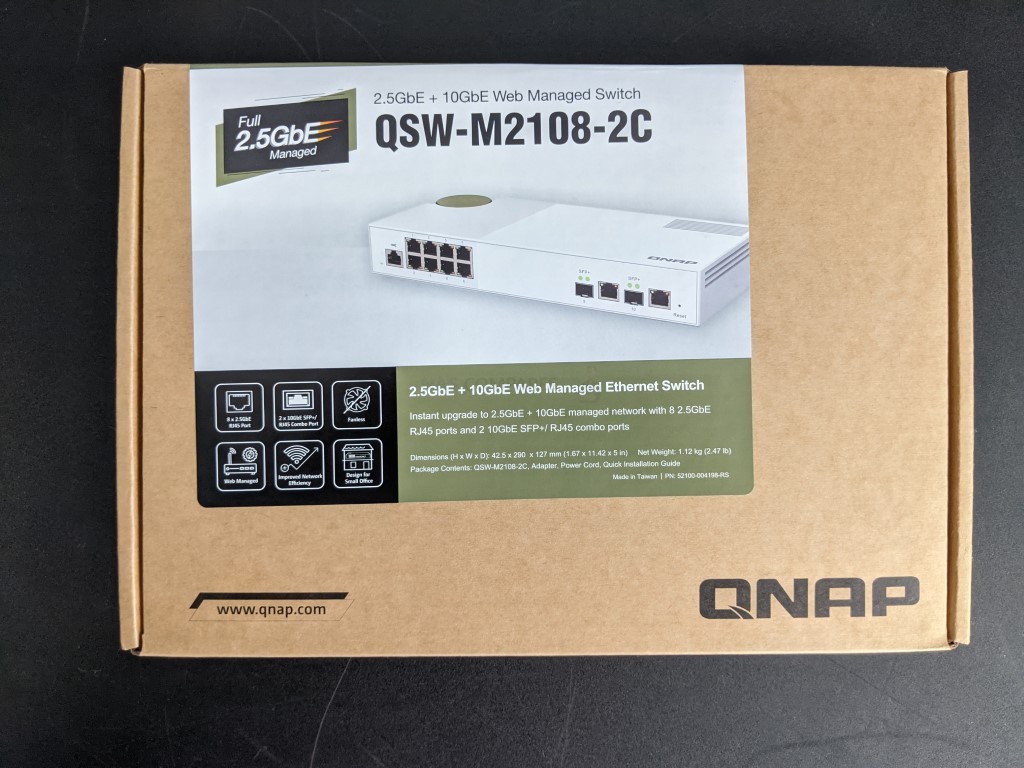
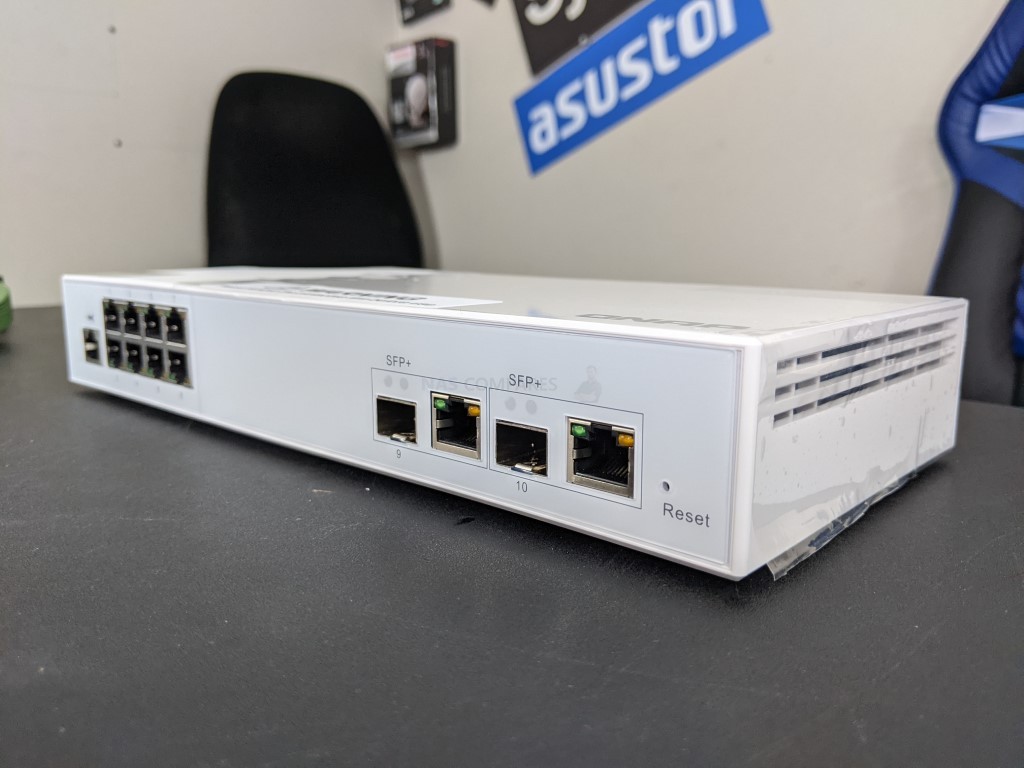
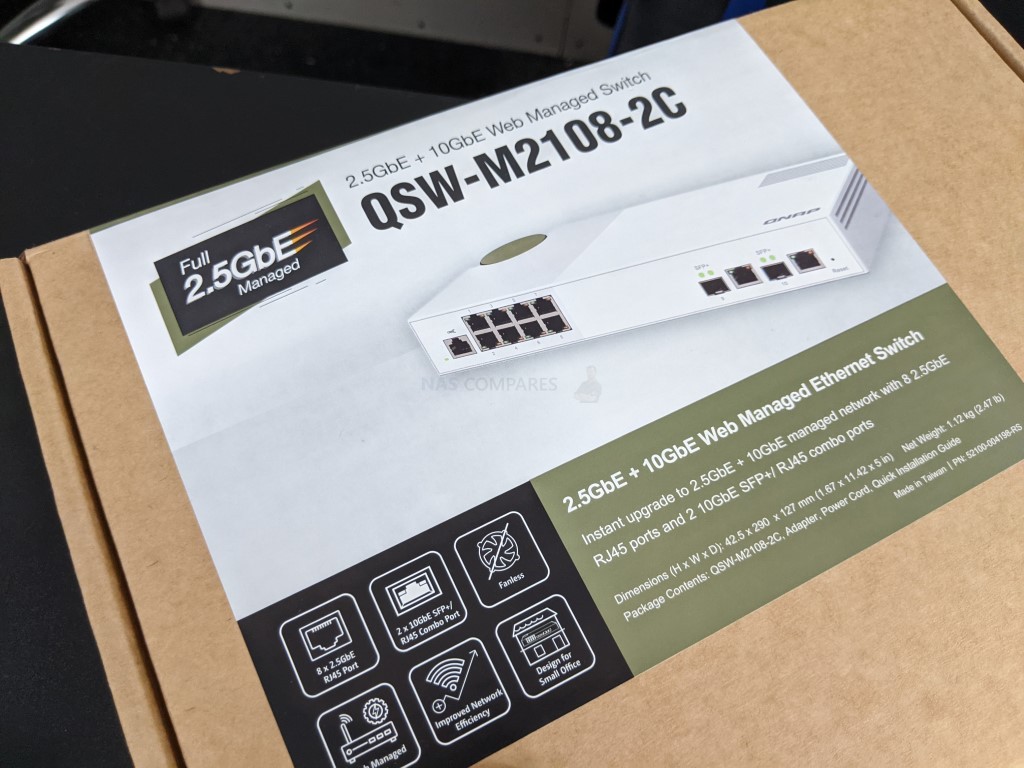
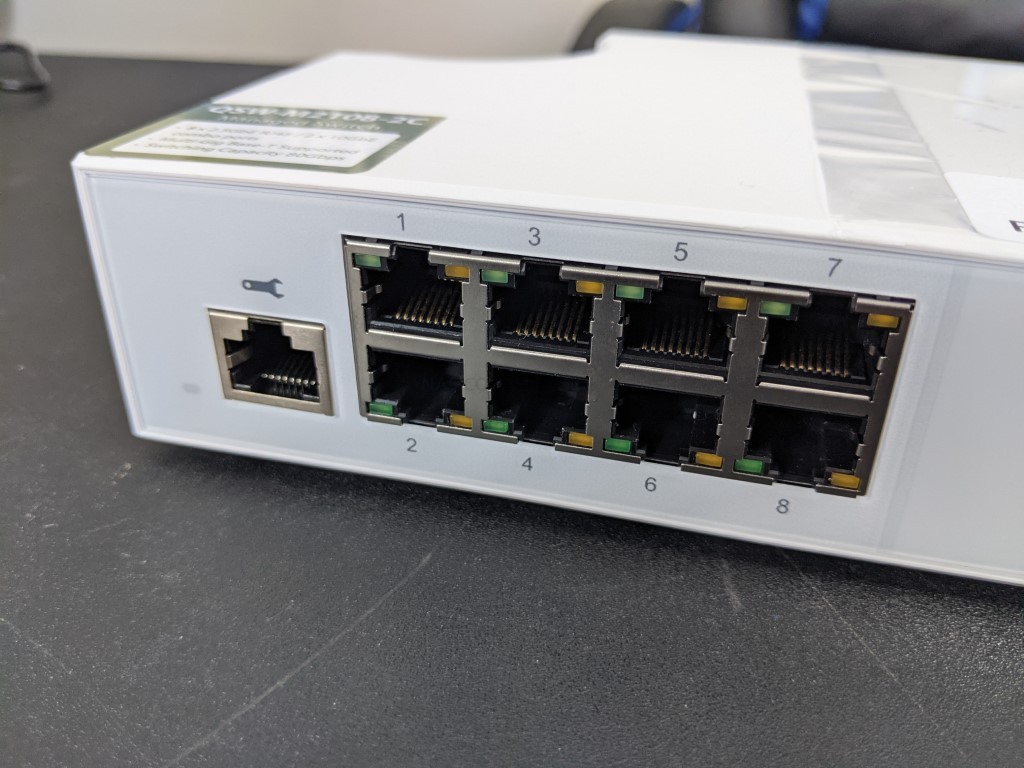
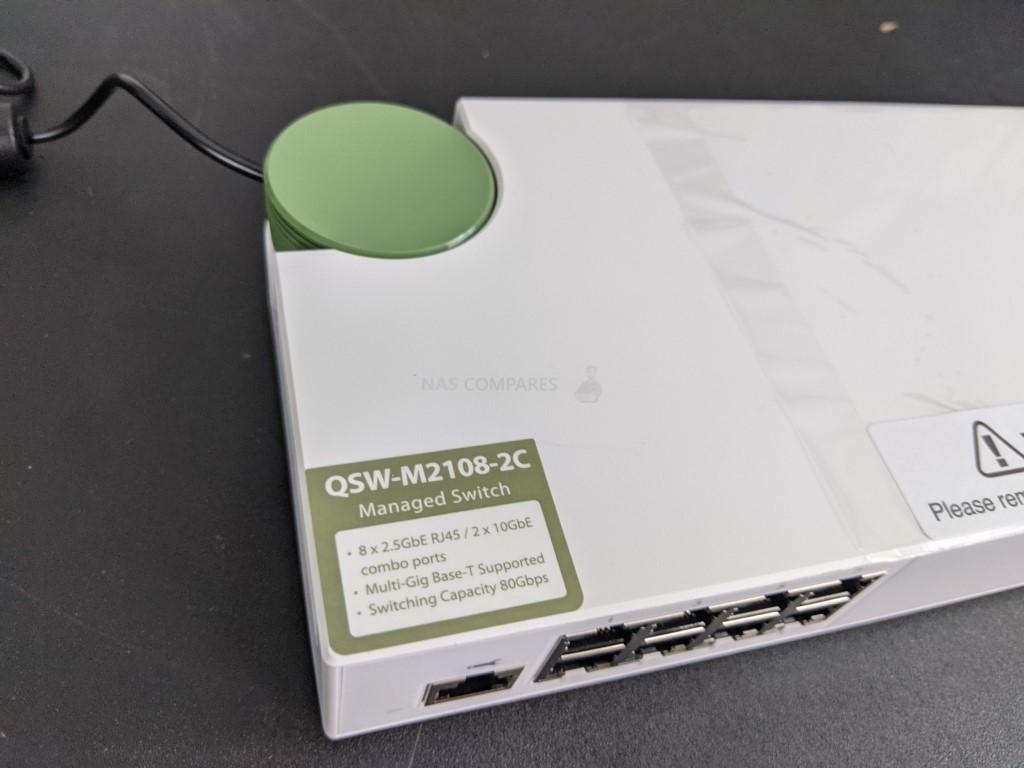
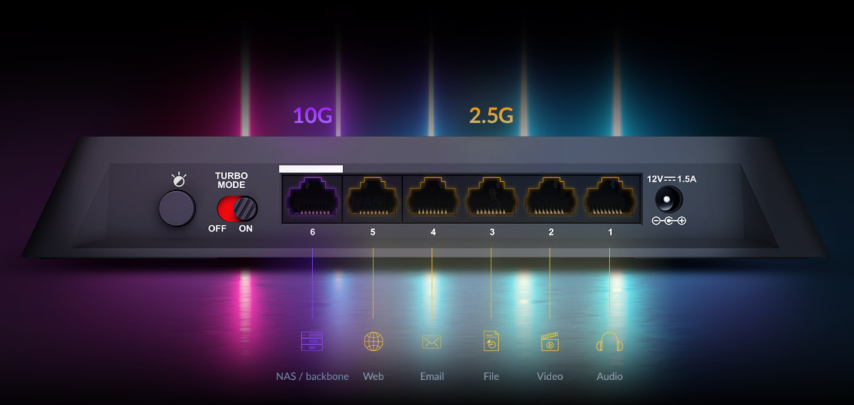
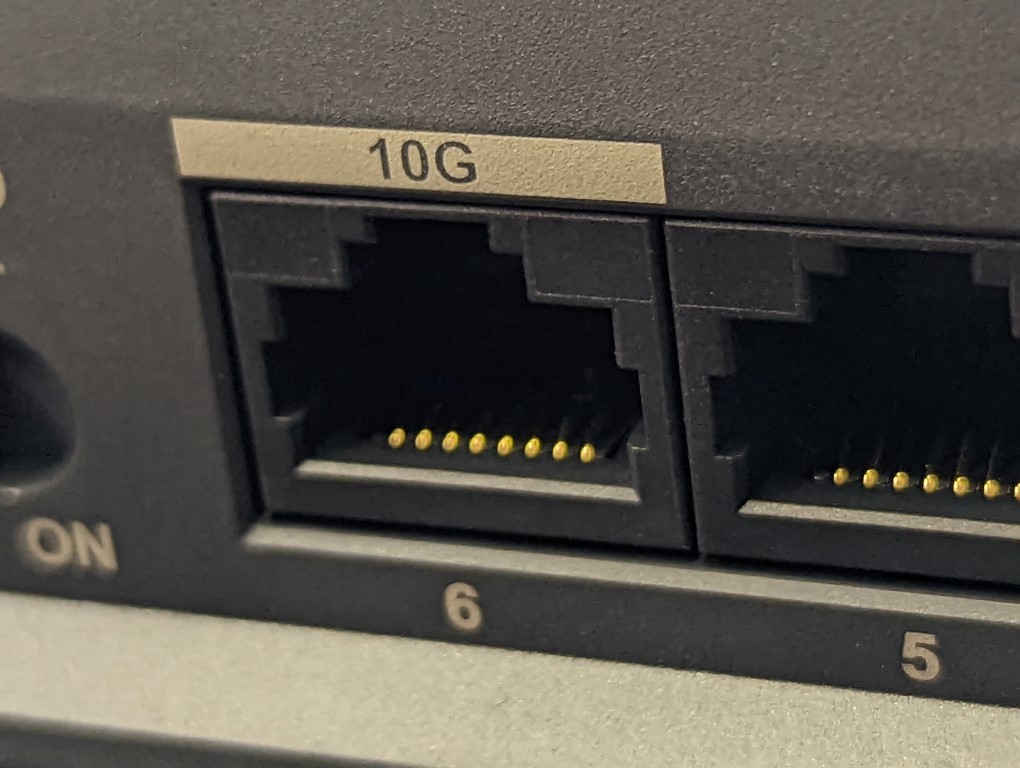
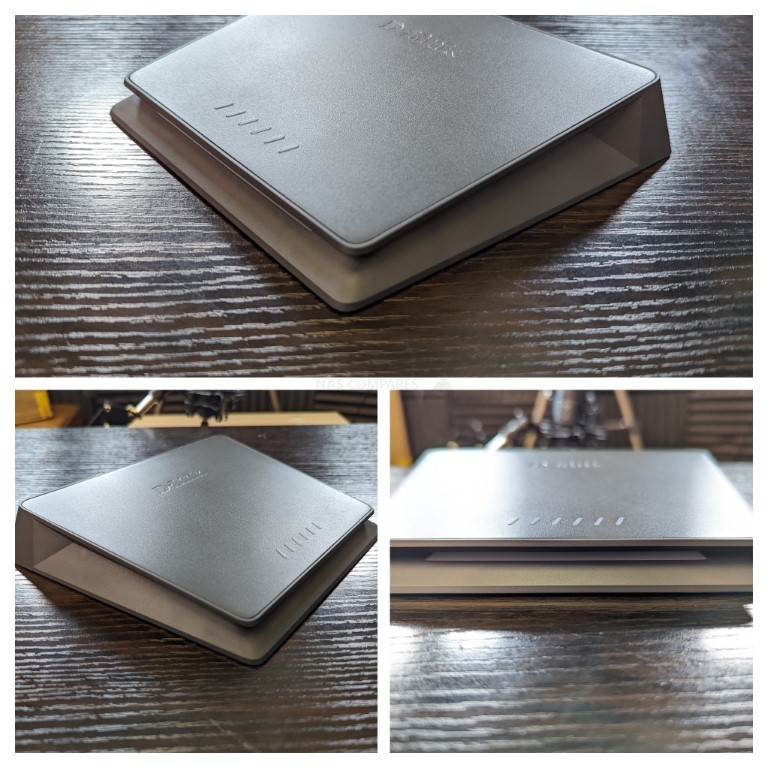
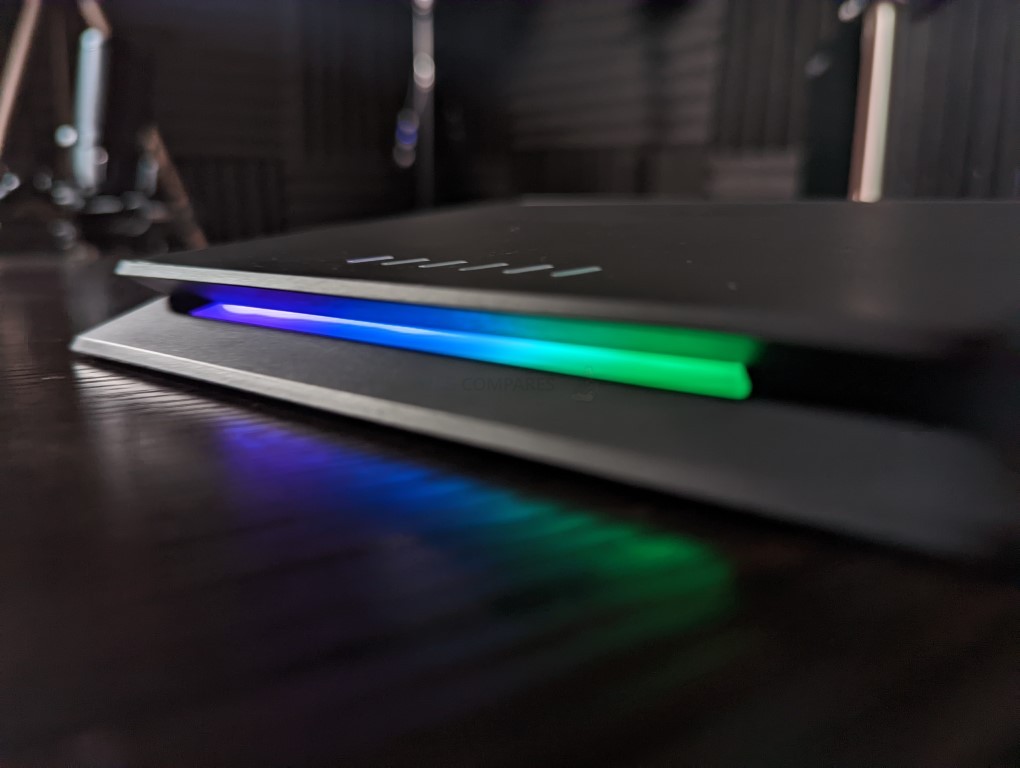
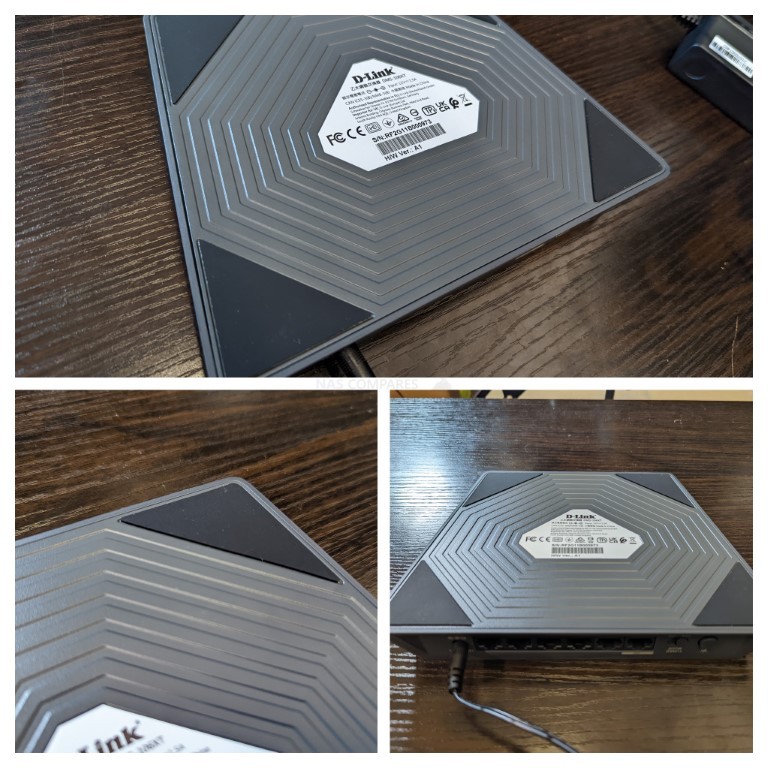
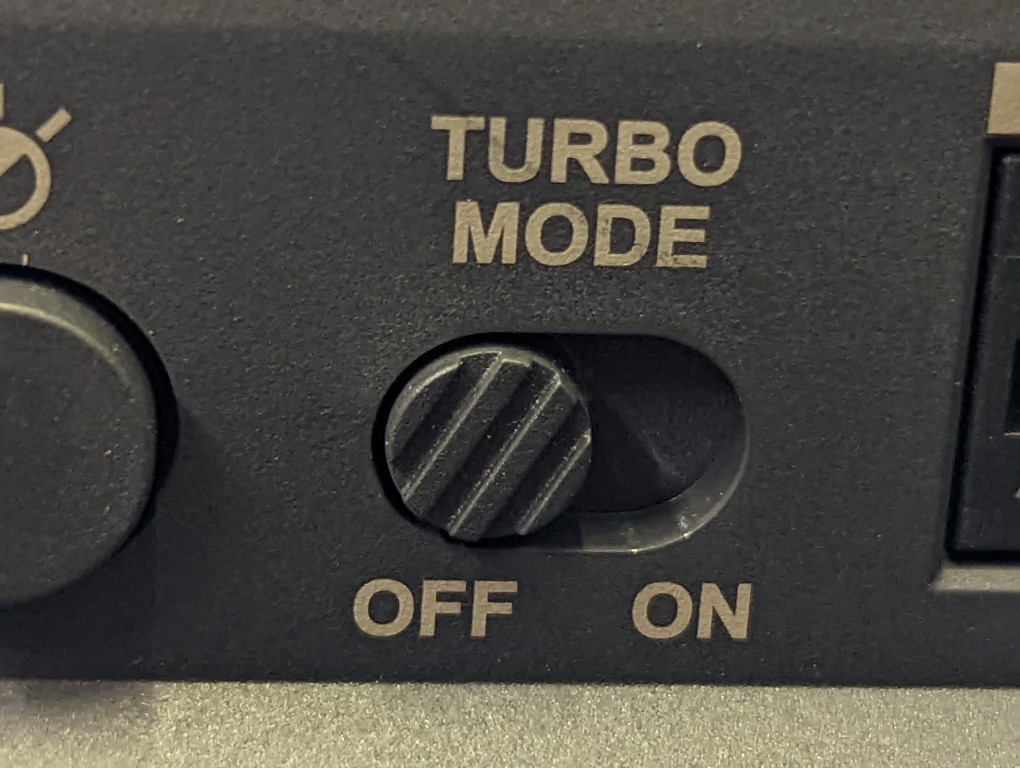
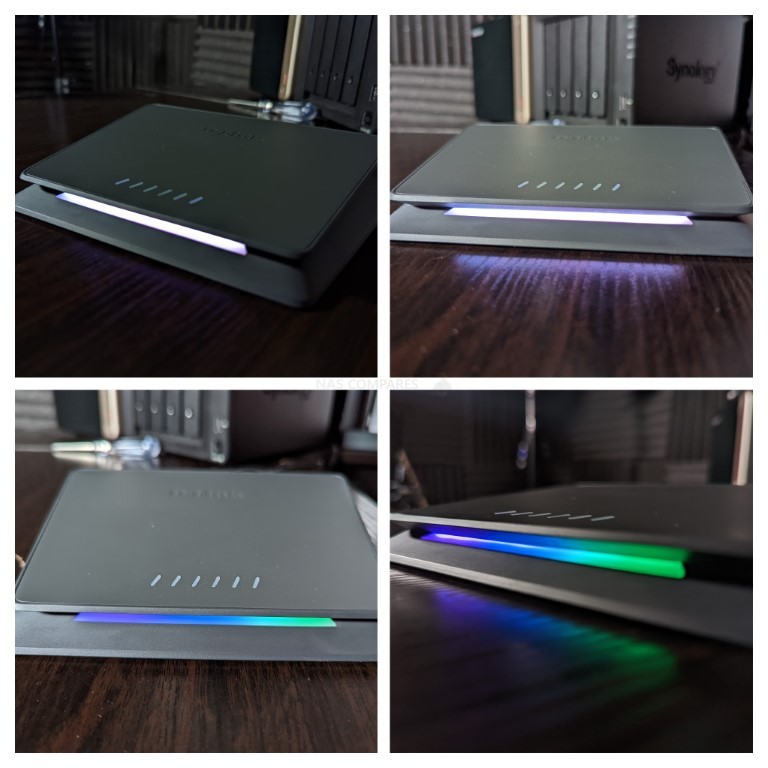
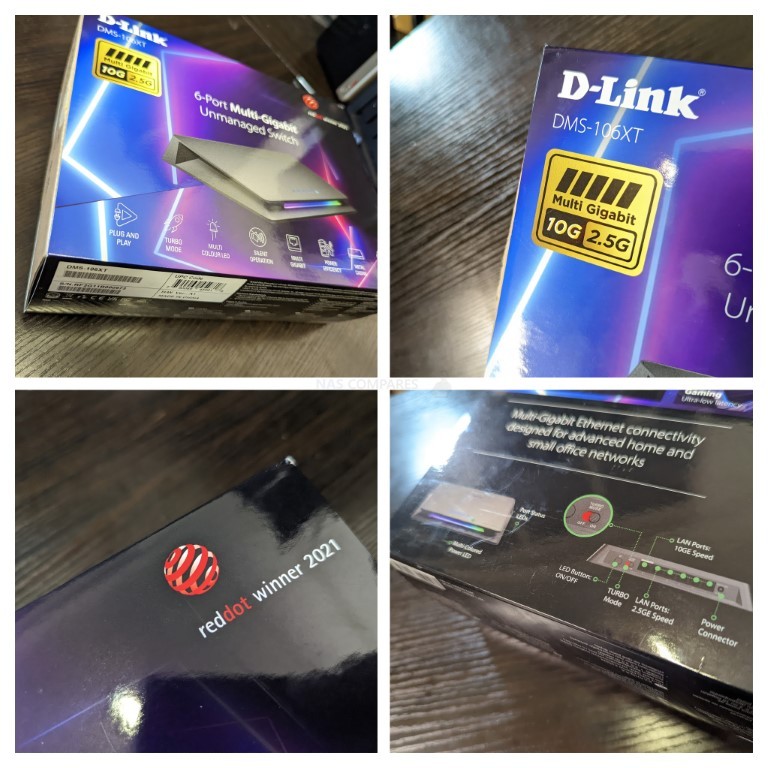
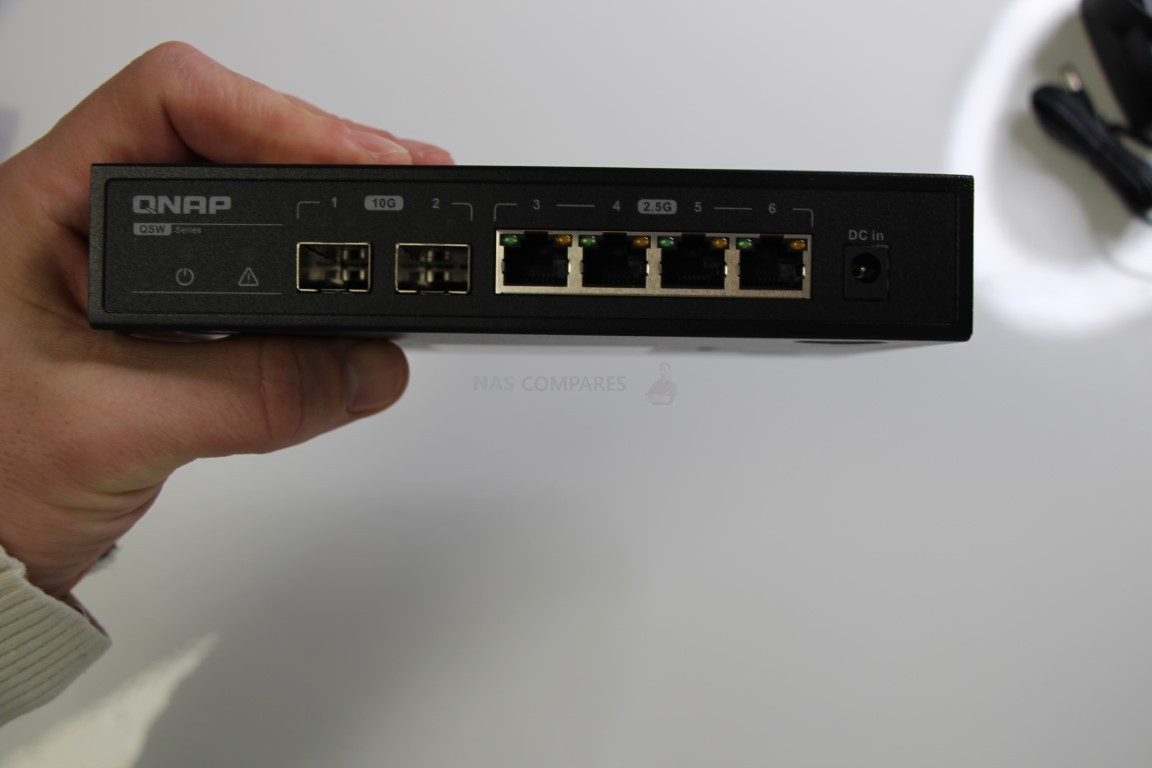
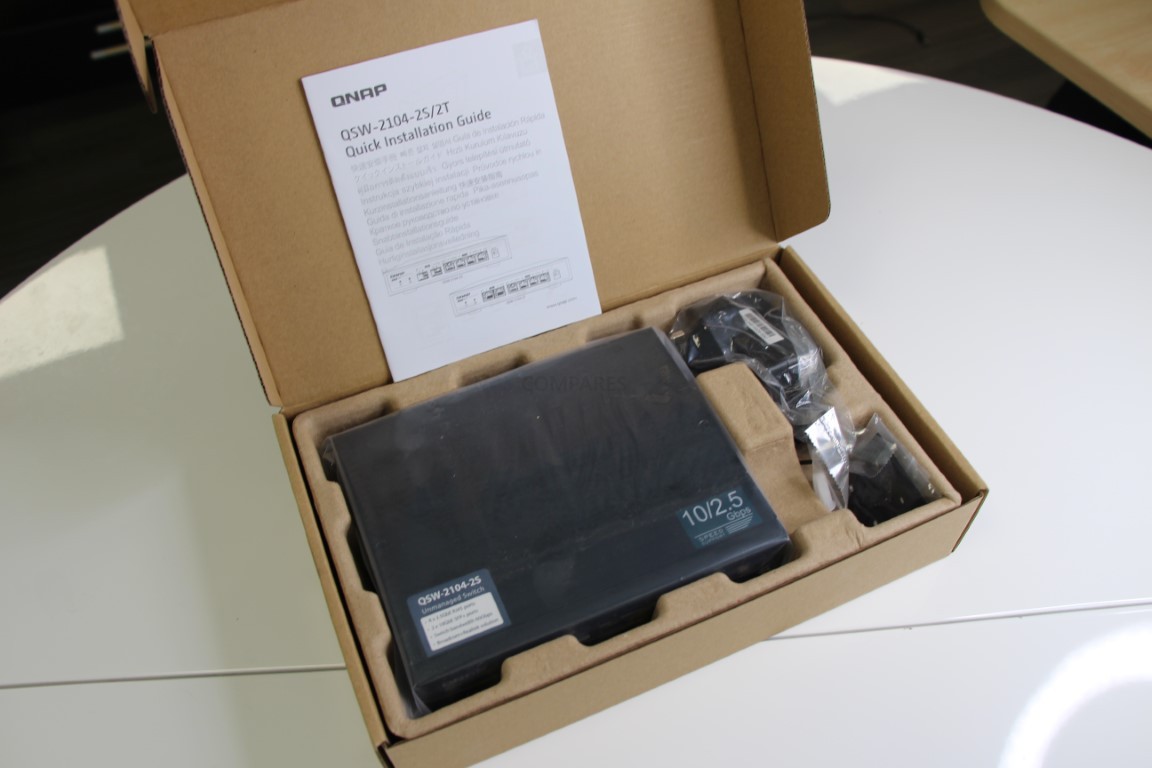
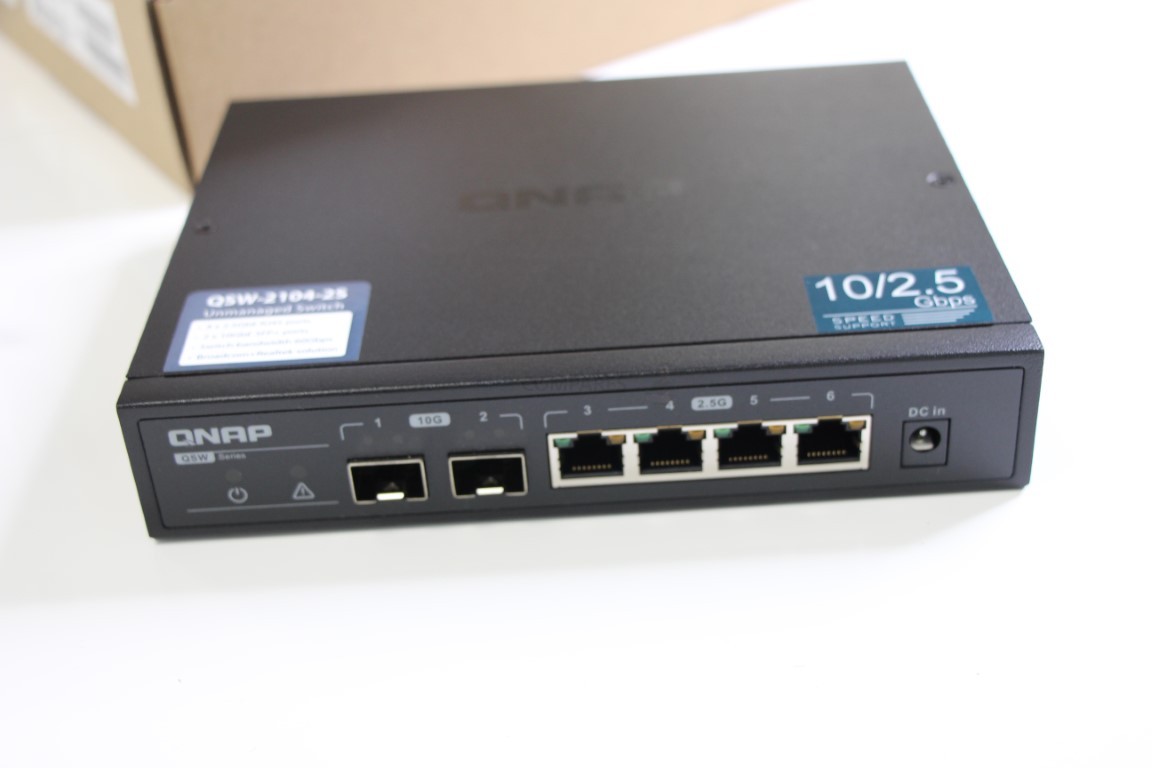
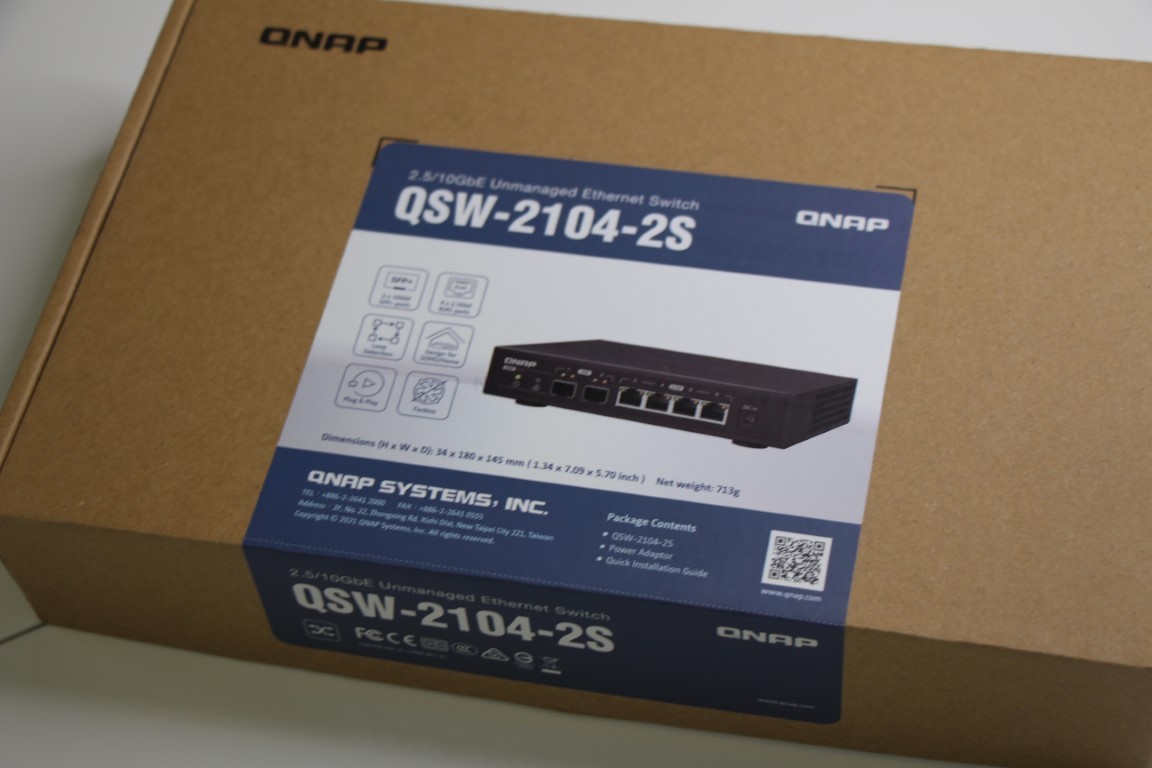
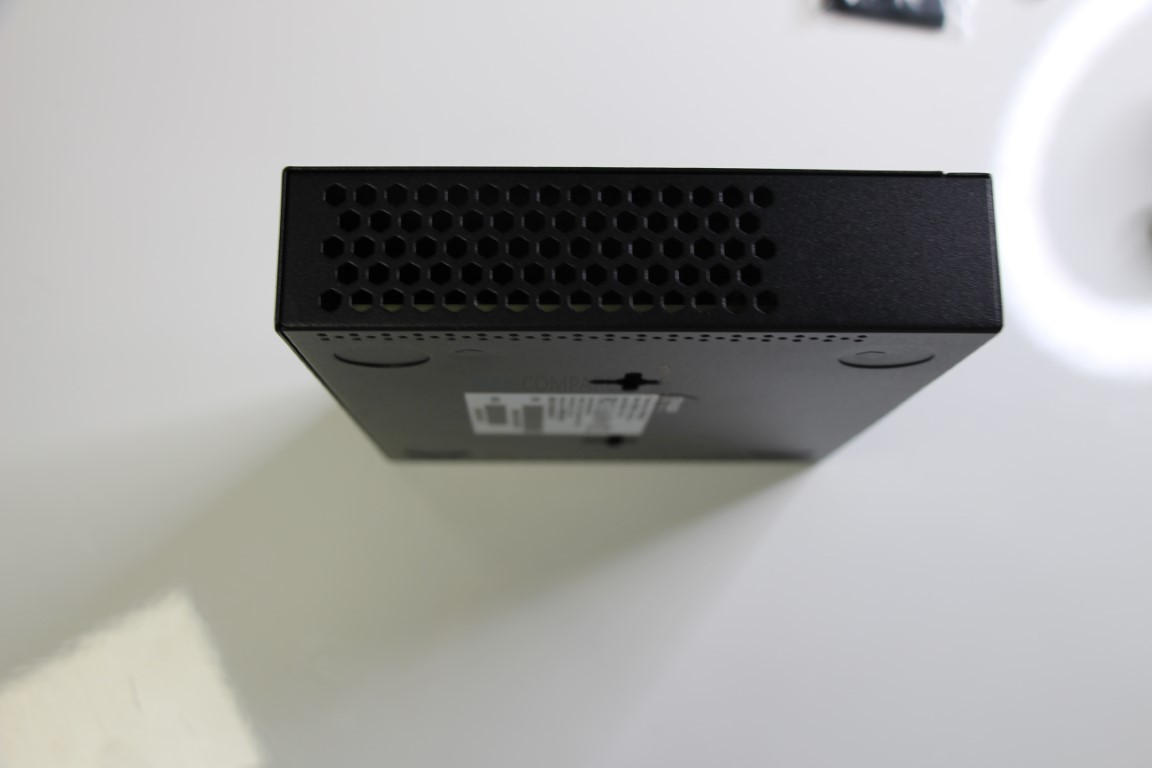
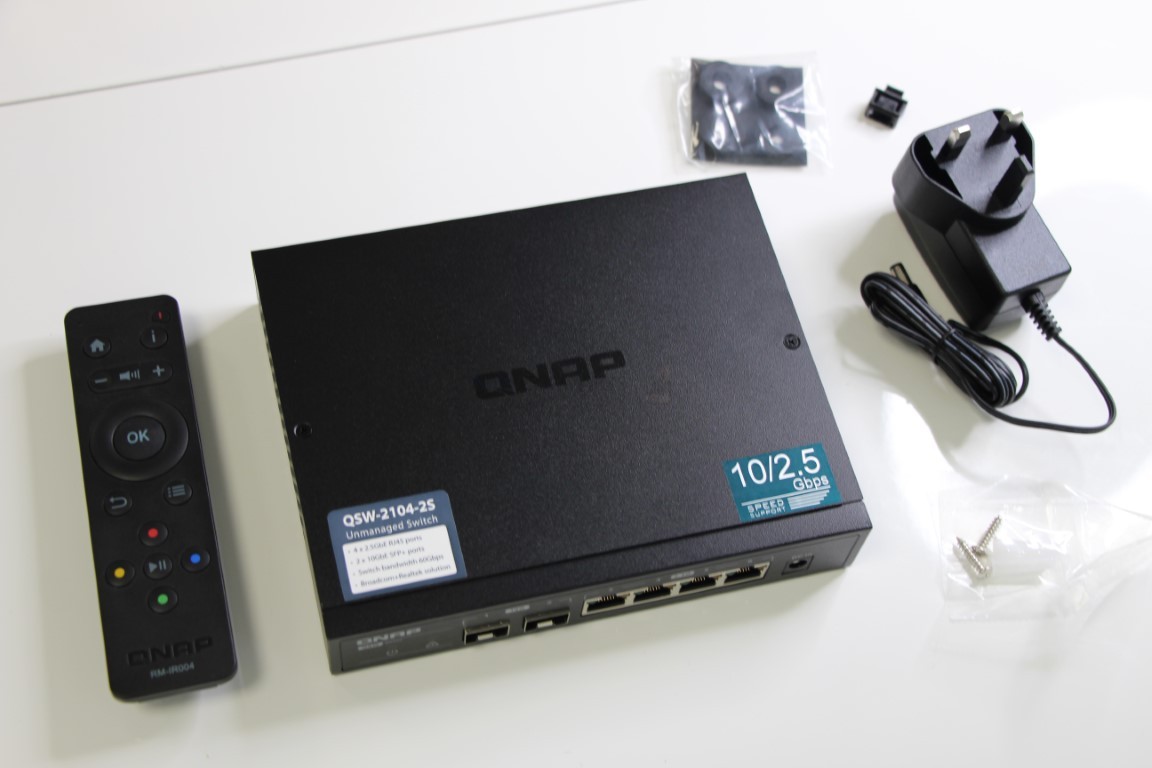



Im not sure 10 gig copper ethernet is the future since they are power hungry and produce lots of heat. I feel 10 gig fiber optic is the future
REPLY ON YOUTUBE
My ethernet cable is made out of 4 wires.
REPLY ON YOUTUBE
You won’t ‘bin it’ within 24 months. Unless it’s a TerraMaster which claimed to have a 10GB port, when in fact it seems to have been nothing more than a hole in the case labeled as if it were a port ( yes I tried their support, however that proved fruitless).That’s what happened to me, and yes I binned it. I now have an Asustor and couldn’t be happier. It’s 2.5gb port works as it should.
REPLY ON YOUTUBE
I found even if you dont have fast internet over 1gig getting a router that supports 2.5gbe and getting as many devices on to that on a busy network can help reduce traffic on the local network, large families and small business can benefit from a cheap upgrade to 2.5gbe as most existing Ethernet installs can be upgraded pretty easy buy buying new hardware.
REPLY ON YOUTUBE
Try as hard as I like, I can’t saturate my 2.5 gig network. I also have a 5GB fiber connection and, well… even with torrents and usenet running on NVMEs on separate router connections I’ve managed 3GB. For about 30 seconds.
I’ve got a lot of Linux ISOs now, though.
REPLY ON YOUTUBE
When I bought a laptop a few years ago, I saw that WiFi 6e was available. I bought a 6e Intel card, only to learn that my HP laptop BIOS only whitelisted certain cards.
REPLY ON YOUTUBE
With 2.5Gbit clients on LAN, 10 Gbit to the NAS probably makes sense because of shared band with….
REPLY ON YOUTUBE
when he called a ROUTER a rooter I spit out my drink. LMAO.
REPLY ON YOUTUBE
Is there a nas motherboard with 3 or 4x 10GbE and 6 sata ports?
REPLY ON YOUTUBE
1GbE will eventually go the way as single core processors. I have 10GbE in my NAS servers with 16TB of NVMe and I still can’t saturate what a 2.5GbE connection would give me.
REPLY ON YOUTUBE
I am going for RJ45 10G straight.
Where are the 2,5gb models from synology??? People got to help themselfs with RJ45 to USB dongle workarounds…
Come on Synology….
REPLY ON YOUTUBE
Honestly, if you have a NAS and are using it in any serious way, 2.5Gb should be a minimum at this point. In fact, I’ve found some reasonably priced gear that’s mostly 2.5GbE, with some 10Gb SFP+ ports as well, and will probably run fibre for 10Gb connections to major switches in my house, then the 2.5Gb connections to each individual device. Is fibre overkill? YES, but I WANTED Cat6A years ago and was told “Cat5 is plenty” only to now be unable to do 10Gb. So for that magical future proofing, fibre is going in, and that should basically do the job forever, since the fibre itself can do 400Gb+ it’s just the hardware at each end that would need upgrading. Do I think I’ll ever use 400Gb… no, but 40Gb would be nice, and maybe one day I might want 100Gb, this way we never have to re-run the cables (yes conduit is amazing, and even MORE future proof than fibre, but it’s not viable in an old, existing house like ours without basically moving out for a month).
REPLY ON YOUTUBE
been eyeing a 300 dollar Atom device with everything on it which is nice but people hate Atom so am like ok lol
REPLY ON YOUTUBE
Amother chap’s youtube NAS channel says that besides upgrading devices, for 10 gbe you’ll need to upgrade to CAT6 cabling as well – and THAT is a BIG consideration, unless it’s original construction!
REPLY ON YOUTUBE
Interesting how much difference a year makes. I just looked on Amazon and you can get four 2.5G ports plus two SFP+ ports for US$55…
REPLY ON YOUTUBE
I purchasted the Nimbuster NAS from you in 2020 to set up my home network and it’s super slow when connected to a Netgear gigabit switch and trying to save and get files from my Mac or PC. I’ve tried to aggregate the connection from the NAS to the switch but it’s still super slow. I guess the bottleneck is in the gigabit Netgear switch. Would I have to buy a 2-5gbe switch? If so how should it be connected and set up? Many thanks for any advice .
REPLY ON YOUTUBE
My question is 2.5GB enough for a single editor an a NAS?
REPLY ON YOUTUBE
o/ from the US. I recently purchased a ASUS GT-11000 pro (on sale) which has 1 x 10g and 1×2.5g ports. My WAN port on my modem is a 2.5g. I connected my 10g port to my Dlink DMS-106xt. I have my dlink connected to a simple unmanaged cisco switch in my living room that connects to my xbox, ps5, TV, and apple TV, none of which support 2.5gb only 1gb. Then I have my dlink connected to a asus GT6 that supports a 2.5g port and 3x 1gb ports. I learned that I should have bought the Zen wifi pro since it supports two 2.5gb ports. Why this matters to me? My pc supports 2.5gb and 1gb on the mobo. Now I’m not going to lose any sleep over it but since I am designing a network that suits my needs I didn’t account for that error in my budget. After buying all these things I didn’t fully think my network setup thoroughly because now I have to buy another multigig 10G port switch that likely cost 300$ USD to fix my error. I just dont have enough 10g ports now. Problems for future me.
REPLY ON YOUTUBE
I think 2.5GBE is underrated. Getting over 280Ms for file transfer speeds. Its pretty fast for what I do with editing videos
REPLY ON YOUTUBE
Thank you for this video, when I renovated my place with Cat 6A cables I moved to a2 gigabit internet connection just this year, however only recently I have purchased USB 2.5 gb singles to upgrade my connections and it has been amazing, thank you for your video it was informative and helped me make the right decision to wait for a year and then move up
REPLY ON YOUTUBE
10Gb is good for the network backbone, like the unifi aggregation switch is a no brainer
REPLY ON YOUTUBE
We don’t need discuss 2.5 GbE, 1 GbE has effectively been the standard for LANs at the edge for over a decade. Thanks to Moore’s Law, computer power doubles, every 18 months (or less), so very quickly LAN speeds need to improve by an order of magnitude (x 10) to be significant.
What few (none?) of the network companies have realised is that computers now come equipped with Thunderbolt 4/USB4 ports and Thunderbolt Hubs. Over our PANs we are already doing 40 GbE. We need switches with TB4 ports, Fairly predictably, network equipment brands have fallen into the trap of treating 2.5 GbE as the new normal.
The new normal is 40 GbE.
We can do 7+ Gb over 5G mobile networks.
REPLY ON YOUTUBE
2.5g isn’t futureproofing. 10g has been around for much longer than 2.5g or 5g… if you’re going to use cat5/6 cables, just go to 10g. the only reason I can think of that companies are feeding us 2.5 and 5g right now is in attempt to segregate a market that started and should be homogeneous. 10g is the way of things right now, today. but even that’s not futureproofing. if you want to futureproof, you should get 10g sfp+ switches and nics and use om3 fiber and/or dac cables to make your connections. the reason for this is that sfp+ is 10g, uses less power, and if you use fiber connections, that fiber will later be able to run 25g, 50g, and 100g (and probably more later on) via bonding multiple frequencies of laser communications together in a single strand of fiber. if you’re building a house today, put om3 in the walls and be happy. worst case scenario, you want to use one or more rj45 based network devices and you buy a 3-5 port sfp+ switch and use sfp+ to 10g ethernet modules for the devices you want to use. the biggest reasons to go with 10g: copying large files (such as videos you’ve got today with your nice video camera), photos from a dslr camera, high resolution audio recordings, backups to and from your NAS. virtual machine migrations for high availability or automatic resource re balancing for homelabbing and/or hosting of services from your home such as nextcloud, video game servers, plex server so you can store your dvd and blu-ray collection on your NAS and distribute that content to every computer, tv, phone, and tablet in your home and outside of your home when you travel, etc. and now that residential fiber is FINALLY gaining traction (I live in rural ct (I can literally walk to cows) and was just offered symmetrical 5 gigabit fiber (I took them up on the symmetrical 2g fiber because it was the same $110 I was spending on 600/25 from charter spectrum cable)), and in some other places, you can get up to symmetrical 10g now.
REPLY ON YOUTUBE
My ISP model is 2.5GbE, most recent motherboards are 2.5GbE, NAS more often come with the red 2.5GbE socket now. It’s a no-brainer to just get a 2.5g switch and be done with it. gigabit network is basically slowly dissapearing with the current hardware being sold.
REPLY ON YOUTUBE
The 5gb adapter for qnap makes sense when all the clients for 2.5gb
REPLY ON YOUTUBE
will you notice or need 2.5 times better throughput for local file transfers vs 1gig? if you don’t do much transfers, and you are not running a time critical business(or personal req) that requires it, then probably not.
but where it may matter is for the upcoming wifi 7 stuff will will benefit from multigig (without it, you will simply be bottlenecked. if you are going to get wifi7, get multi gig networking gear to go with it, e.g. switches, nics etc)
homelab networking enthusiasts may also appreciate more than the standard 1gig.
Also in 2023, a lot of motherboards nowadays have 2.5gbe. You would have to go out of your way to go for the cheapest possible motherboard to get a 1gbe port.
REPLY ON YOUTUBE
That thumbnail haha. You’re a funny person.
REPLY ON YOUTUBE
The issue with 2.5G is the switches… If you poke around, you can get 10GbE for the same or less than 2.5G, especially if you like old Enterprise gear as I do. I can set up 10gig for way less than I can for 2.5gig, as Enterprise skipped 2.5Gig thus it’s not around in the used market. If you need managed switches, like I do, then 2.5G actually costs more than 10gig. Since regular cat6 cables can handle 10gig speeds over shorter cable lengths, it’s less of an issue than you make it out to be.
2.5G may be on a lot of new devices, but if the supporting hardware is more expensive than 10gig, it’s pointless.
REPLY ON YOUTUBE
Your talk about futureproofing really hit me. Its one of the reasons (having GbE FTTP WAN/Internet already) I was determined that when I finally paid a decent chunk for a new router, it MUST have at least 2.5GbE WAN and LAN, rather than the 2.5Gbe WAN OR LAN which seems common, and rather defeats the point IMO, as you’ve got an instant bottleneck.
I am looking to upgrade the backhaul around my house fairly soon, as it will mean even if my NAS is still only running 1GBps, I will have full capability to max out the internet AND NAS at the same time across the network, or. if its via a machine with 2.5GbE, maximise the internet AND NAS usage at the same time, all the whilst having overhead so other devices on the network can still communicate with each other. Also means I will not be instantly having to run to upgrade equipment if I 1.8/2/2.5Gb FTTP becomes available.
Im not expecting all of this to happen now. But it may well in the next few years, and will also give additional overhead room for shared bandwidth on the network if multiple machines are heavily active at a given time. Again, not designing around whats capable now,. but what may happen in the next few years.
The only thing delaying the upgrade is the cost of 2,5GbE switches at the moment, multiple machines around my house already have 2.5GbE NICs, but whereas I can get GbE NICs for pennies, a 2.5GbE Switch is still over £100.
REPLY ON YOUTUBE
.900 Gigabit/s= 112.5 MegaBytes/s = a single spinning rust slow sata hard drive speed
1.1 Gigabit/s= 137.5 MegaBytes/s = a single spinning rust fast sata hard drive speed
2.3 Gigabit/s= 287.5 MegaBytes/s = generic 2.5Gbit/s Linux data rate
4.4 Gigabit/s= 550 MegaBytes/s = a good sata ssd
60 Gigabit/s= 7500 MegaBytes/s = some Gen 4 NVMe PCIe SSDs capable of 7500 MB/s
REPLY ON YOUTUBE
10 GB network is expensive and only makes sense with fiber optic cable. 2.5GB Ethernet can use old CAT5e, CAT6 cables. It also uses less power than 10GB copper Ethernet. Unfortunately, 10GB SFP can not switch to 2.5 GB but then fall back to 1GB.
REPLY ON YOUTUBE
I work in business and small datacenter networking, and anything between 1 and 10 Gbps does not exist. SFP, sure, they’re 1, 10, 25, 40, 100 Gbps.
Even in my home use, I’d rather get everything on 10 Gbps than pay the barely supported premium for 2.5 or 5 Gbps, especially on managed devices.
REPLY ON YOUTUBE
its complete overkill. more people than not dont yet have access to fttp in the UK for even 1gb and thats going to take a good 5 years at least.
REPLY ON YOUTUBE
Power consumption is massively missing from these reviews. Anything you are going to have running 27/7, energy usage is such a big thing.
REPLY ON YOUTUBE
I think 1Gb/s will be sufficient for most house/small business users (except NAS storage, iSCSI) for next 5 or more years.
REPLY ON YOUTUBE
Moved entire network to 2.5gbe. Pickup up a 453E and a bunch of 2.5 to USB3 and some new switches. Real nice speed boost! No fans, so it is quiet.
REPLY ON YOUTUBE
That was extremely informative, thank you
REPLY ON YOUTUBE
I think at this point it’s pretty safe to say that for most non enterprise applications 2.5Gbe is the horse that is firmly in the lead over 5 and 10
REPLY ON YOUTUBE
I took your advice and went 2.5gbe and also bought a Asustor AS6702T Nas with NVME storage, I am having the easiest of times setting up the Nas it is so simple. Watching Blu-ray files from the Nas is super fast. Thanks for all your help. Looks like I’m planning for 10gbe in the near future.
REPLY ON YOUTUBE
I only have 1Gbe router. If I buy a 2.5Gbe USB C Ethernet adapter, would the speed increase compared to a 1Gbe connection?
REPLY ON YOUTUBE
Workstations have 10gbit on almost every port now USB etc. Except for the one you use the most, your network interface port. It is not overkill, it’s falling behind in my opinion. A lot of people rather have wifi for network connections nowadays cause it is surpassing their cabled network speeds and it is more convenient. If you still care to put a cable through the ceiling you better have something that makes it worth it! Large capacity NAS at the read and write speed of local SSDs.
REPLY ON YOUTUBE
I have 2.5GBe right now. no switch either. just added an extra 2.5g nic in my server and desktop, and have them as an additional direct NIC. updated hosts file on my server and voila, my server can be accessed at 2.5g for $50.
REPLY ON YOUTUBE
Hi m8, watched a good few videos regarding NAS, are you interested in a video tutorial setting up a semi cheap NAS setup with semi total noob build. I Have the parts etc, but cache disk, OS and RAID setup are still total nightmares for someone like myself still surfing channels to find a definitive answer to my questions?
REPLY ON YOUTUBE
I belive wifi ratings include the overhead and payload of packets, where ethernet speeds are just the payload, something to keep in mind
REPLY ON YOUTUBE
I have 2.5G fiber (upgraded from 1G a couple months ago) in my house. I’m still waiting for a router with multiple 2.5G ports. Most only have it on the WAN or the LAN, but not both. Really frustrating. Hopefully that changes with the upcoming Wifi 7 routers.
REPLY ON YOUTUBE
Only the newest 10GbE equipment will negotiate down to 2.5 or 5 gigabit. Those speeds were not available until 2016, when 10 GbE had already been around for a decade.
REPLY ON YOUTUBE
I picked up a QNAP TS453D not long back to replace an older Qnap with the dreaded bad firmware update. It’s got twin 2.5Gbe ports on it but the trouble I’ve found is there’s limited routers and network switches currently available to actually utilise this feature. I even decided to update to a wifi 6 router (as I’ve got a wifi 6 laptop). While the routers got link aggregation, they’re still only 1Gbe ports. The only router that did have 2.5Gbe (ASUS) was considerably more pricey and didn’t have link aggregation either – so barely worse off having twin 1Gbe ports.
Besides, the features only useful IF the laptop had 2.5Gbe capability too. But still OK if you’re running a few devices concurrently sending data (at least the transfer speeds aren’t bottle necked).
REPLY ON YOUTUBE
Wish 2.5GbE would become standard, 1GbE is way to slow these days.
My pc has 2.5GbE, My Router has 2.5GbE, My Synology 5 bay NAS has 1GbE 🙁
Network is only as good as the weakest link.
REPLY ON YOUTUBE
You touched on it, but to expand:
You are only going to get a maximum speed equal to the weakest link in the chain.
If your Internet and router is 2.5gbps, but your switch is 1gbps and your old laptop’s network card is 100mbps, then you will never get performance from that laptop faster than 100mbps.
I have 300mbps ethernet and 1 PC with 1gbps LAN, and 2 PC sticks with 100mbps LAN.
The PC sticks will only ever send/receive at a max of 100mbps to either the internet, the other PC stick, or the PC.
The PC will only get internet of 300mbps and the communication between the PC and the sticks will be 100mbps max.
REPLY ON YOUTUBE
My APs have 2.5Gbe ports. I am researching POE switches with 2.5Gbe ports.
REPLY ON YOUTUBE
I don’t really need 2.5g everywhere , but I would like it on my core connections. sadly I cannot find a cheap 4 or 8 port switch (unmanaged) with a 2.5g uplink port and the rest as 1GB ports . If anyone knows of one , comment below.
REPLY ON YOUTUBE
Fun future-proofing story – built my house over 20 years ago. The town had no cable internet yet, but I still had every phone plate box run with 2 Cat 5 cables. First, wired for multiple phone lines, then DSL came. When real ISP came, 4 wires got me 100Mb speed. As we didn’t need the phone lines for dial up, over time I rewired each port to have full 8 wire 1Gb connectivity.
At 2.5Gb, it’s only one room that needs this. My home office with multiple computers and NAS. Exactly right that 2.5 is pretty cheap to add, and my spinning drives aren’t saturating that. Unless I change to a RAID configuration on the desktop, this setup will work for quite a while.
REPLY ON YOUTUBE
95% of homes have cat5e, so there’s no question of 10GbE without ripping the walls, which isn’t a problem at 2.5GbE. 95% of WiFi6 APs have 1 GbE LAN, so how do you want to use the full WiFi6 bandwidth, between laptop and NAS, laptop and internet etc. If you want to take full advantage of WIFi 6, you have to buy the most expensive AP which has, guess what… 2.5GbE LAN.
REPLY ON YOUTUBE
Yes but only if you buy basic nas’s, 10gbe is better , you can buy 10gbe 2nd hand switches and nics so cheaply now and often only need a switch with 2 x10 for your main pc and nas.
1100mps is what your nas can do in a raid or with m.2 on 10gbe.
280mps is good for budget nas’s where you have max 2 drives mech models or cheap Sata SSD’s its good to see entry level at 2.5gbe
REPLY ON YOUTUBE
Synology Buys holding off for 2.5Gbe
REPLY ON YOUTUBE
Intel Nuc low End I3 have 2.5Gbe now
REPLY ON YOUTUBE
Synology is sadly missing the Boat. I have 1 2.5 Gb Network on almost all the workstations Server, 2.5GBe I will have Fiber connect soon. Qnap and many other have Nas have 2.5Gbe , I have talked to Synology Tech Support no word on any 2.5GBe sadly Nas box after 2.5GB Fiber, will be the slowest device in the Network , Does anyone have and info on 2.5GBe from Synology
Qnap has had it for years
REPLY ON YOUTUBE
Nice! Would like to see a 2.5gb video showing a setup. Maybe with connectivty to NAS devices that don’t have a 2.5gb adapter (usb or card added) and a more modern one. What Cables do i need? Virutalization station concerns? Port binding? that sort of thing.
REPLY ON YOUTUBE
Don’t forget to check your specs. Many early 10Gbe chipsets don’t support 2.5Gbe and 5Gbe. Buying cheaper switches may leave you stuck at 1Gbps if they don’t support the middle speeds.
REPLY ON YOUTUBE
I went with 2.5Gbe on my 4 bay NAS. It’s an older Asustor unit. Several computers need to access it at the same time. My Plex Server saves all DVR files there and my Transcoding setup transfers files off and back on. It really helped with congestion when streaming from Plex. I’d go up to 10Gbe with my next NAS.
REPLY ON YOUTUBE
I really love your videos! You explain things in such clarity just one thing, why are they so long?
I noticed that in one of your videos you repeated the same thing 4 times (different examples) before getting to the heart of the issue.
Can you please try to make your videos shorter?
Thanks!
REPLY ON YOUTUBE
Want full 2.5/10Gb speed? Full DATA PATH upgrade is always required 🙂
2.5Gb should be an entry data speed standard. 1Gb is to just slow for current performance of internal devices. Also 2.5Gb might be last standard that can be thermally manageable in laptops or SFF/Thin clients. 5 and 10 are just too hot. Also 5 and 10Gb are fast but use of external USB/Thunderbolt devices is not what you would call stable…
REPLY ON YOUTUBE
can i use a usb to 2.5gbe on my synology NAS
REPLY ON YOUTUBE
2.5GbE is too slow, I recommend 10GbE ????
REPLY ON YOUTUBE
Thank you for putting this out, practical thinking is hard to do when speed is the topic. Time to stay grounded and avoiding distractions is the way for me. Lol. Cheers.
REPLY ON YOUTUBE
Ese atuendo me vuelve loco fukada-jpp.monster loco contigo y tienes ese cuerpo curvilíneo, hiciste un buen trabajo modelándolo también. También me gusta el último atuendo. Me encantac cómo los cinturones de liga se.
REPLY ON YOUTUBE
I’m just starting to move everything to 2.5gb with my truenas running a 10gb. But I’m also seeing better performance from my 1gb devices.
REPLY ON YOUTUBE
I’m running 10 Gb/s at home so the answer to this debate is kind of obvious to me.
REPLY ON YOUTUBE
Firstly, I am impressed by your ability to count by 2.5. I have a new PC arriving today that has 2.5GbE built in. Luckily, it also has 10GbE built in. (It’s a Core i9 Intel NUC 12 Extreme.) I’ve been 10GbE in my home lab for nearly a decade, starting with a Netgear switch, progressing to as used Arista Networks switch and finally installing a Ubiquiti aggregation switch a few months ago. The Ubiquiti switch has four 25GbE ports as well, so I’ve gone an upgraded my two Dell PowerEdge servers to 25GbE with Mellanox fibre cards. I’ve upgraded my two big Synology NASes as well. The Synologys support the Mellanox cards out of the box. I consider the 2.5GbE standard a “feature” aimed at consumers to get them to buy hardware (again). 10GbE is and has been an enterprise solution for a very long time now. It’s too bad vendors have been so slow to get on the 10GbE bandwagon. A 10GbE NIC or switch shouldn’t have to cost more than a 1GbE or 2.5GbE NIC or switch.
REPLY ON YOUTUBE
For a home/SOHO network, being able to transfer files at around 280MB/s is a big upgrade from just 105MB/s. That reason alone is enough to use 2.5GbE.
REPLY ON YOUTUBE
Any plans to test if it allows better access or throughput to a nas when compared to using gigabit on the same device?
REPLY ON YOUTUBE
2.5Gb is 10 years too late.. huge bottleneck with modern drives.
REPLY ON YOUTUBE
for me convient. faster than 1 GB, cheap, works fine and none of my Hardware is bottlenecking it. Did i think about 10gig…yes, but this would have caused such an upgrade cascade….
REPLY ON YOUTUBE